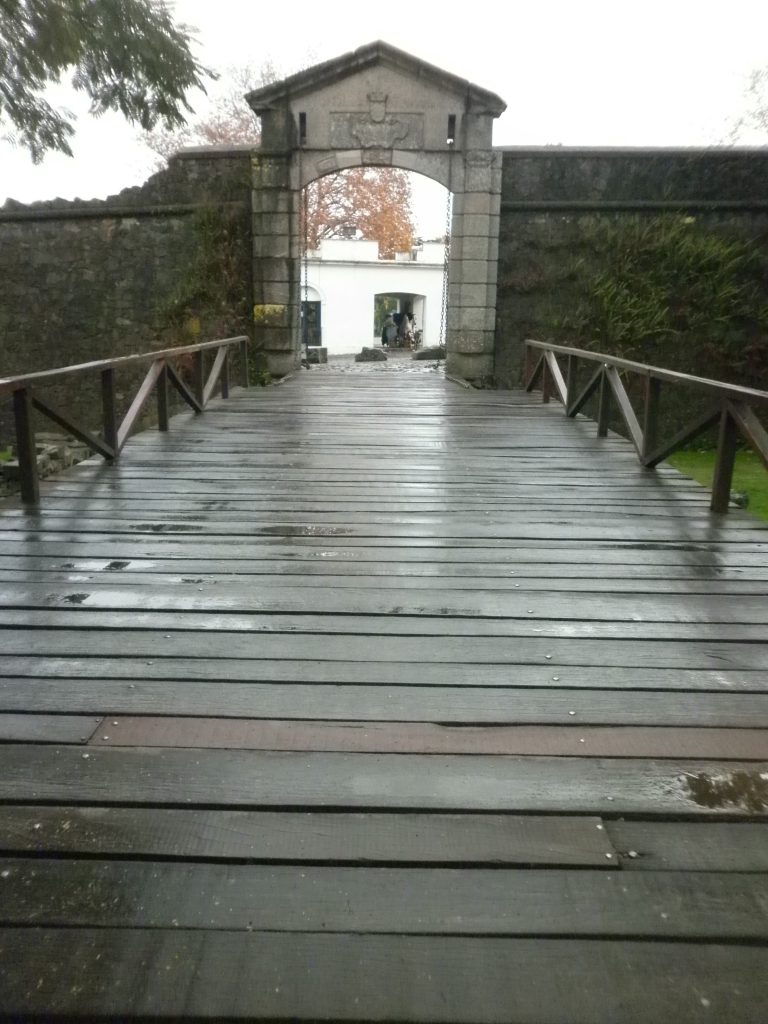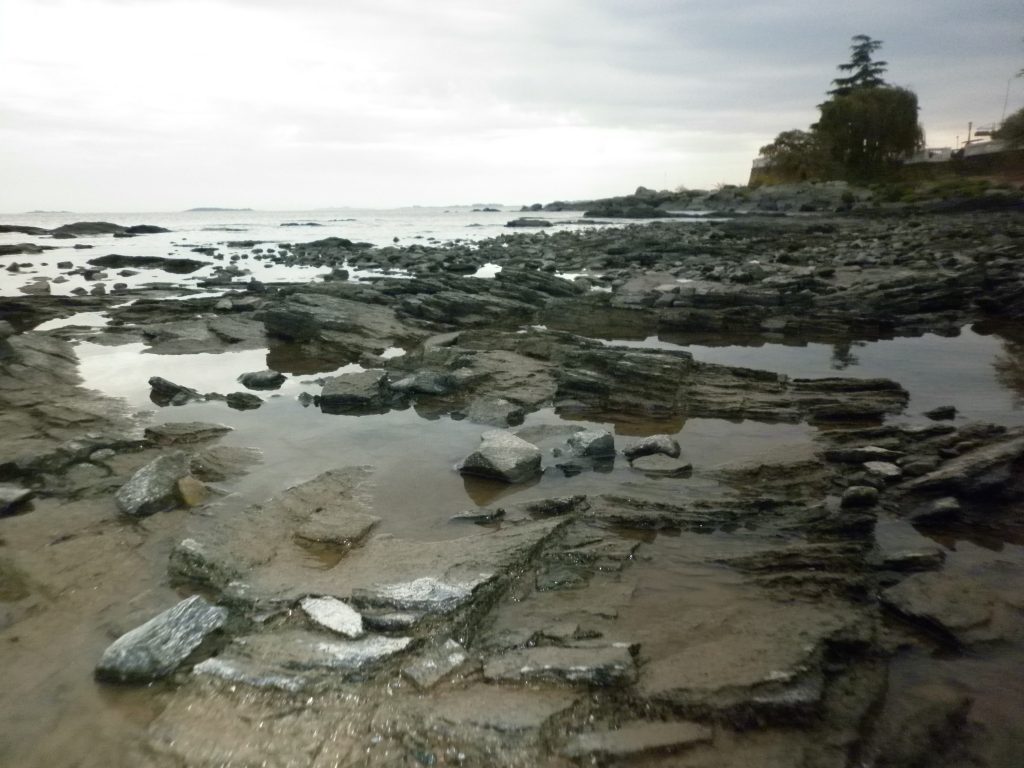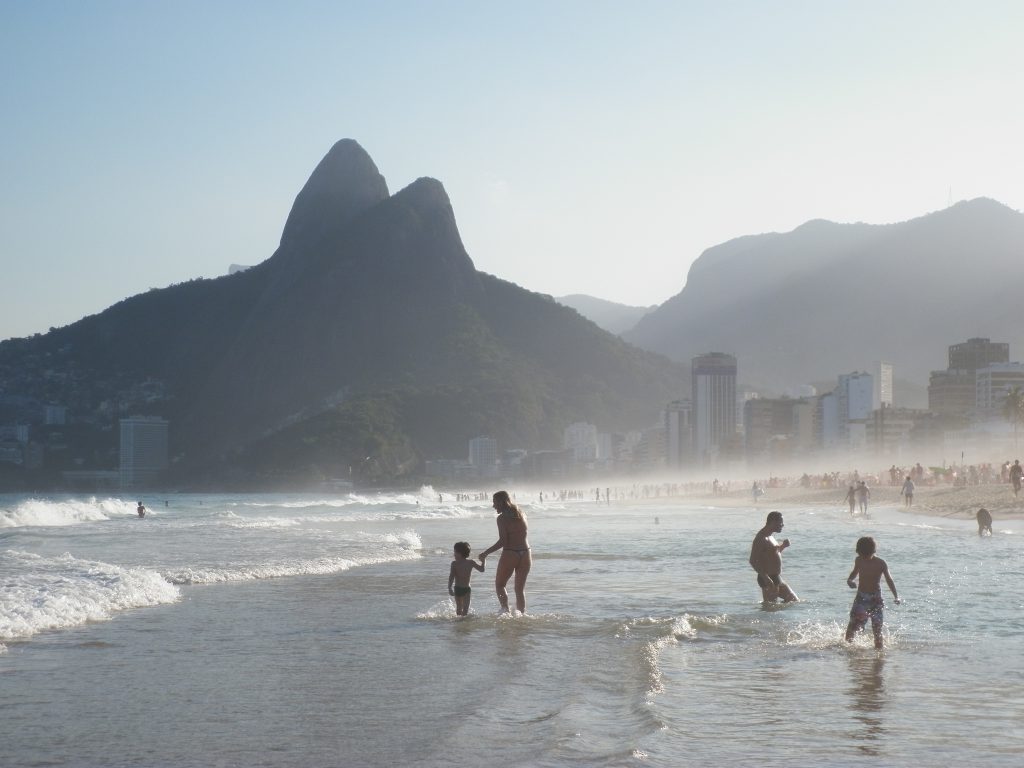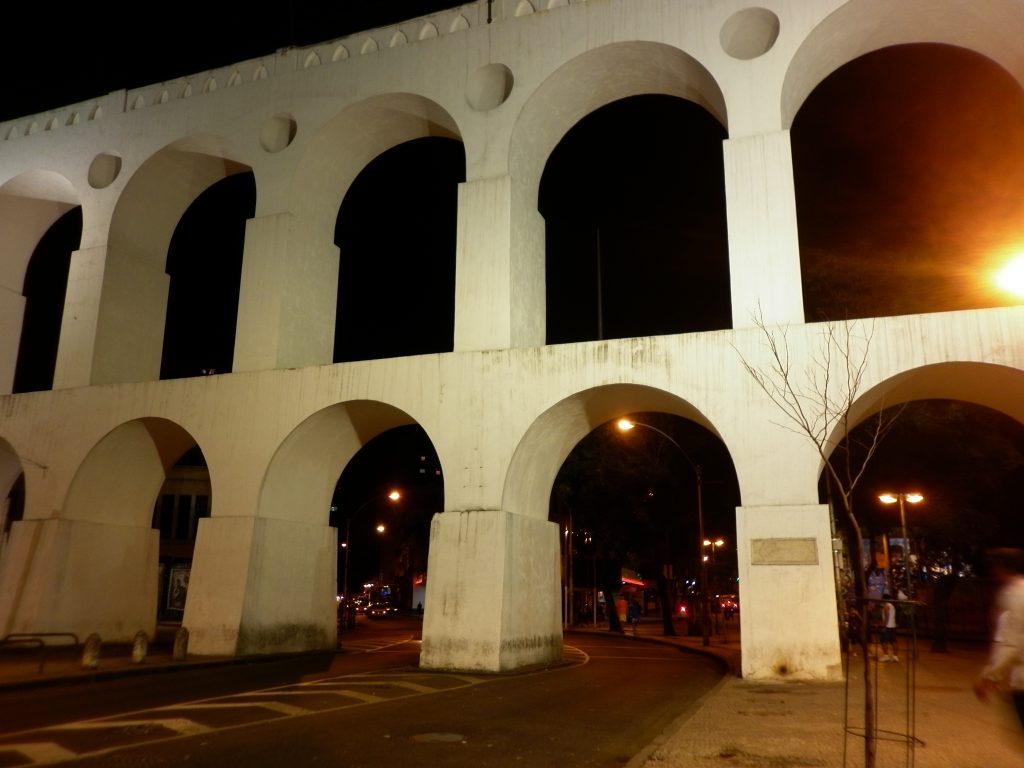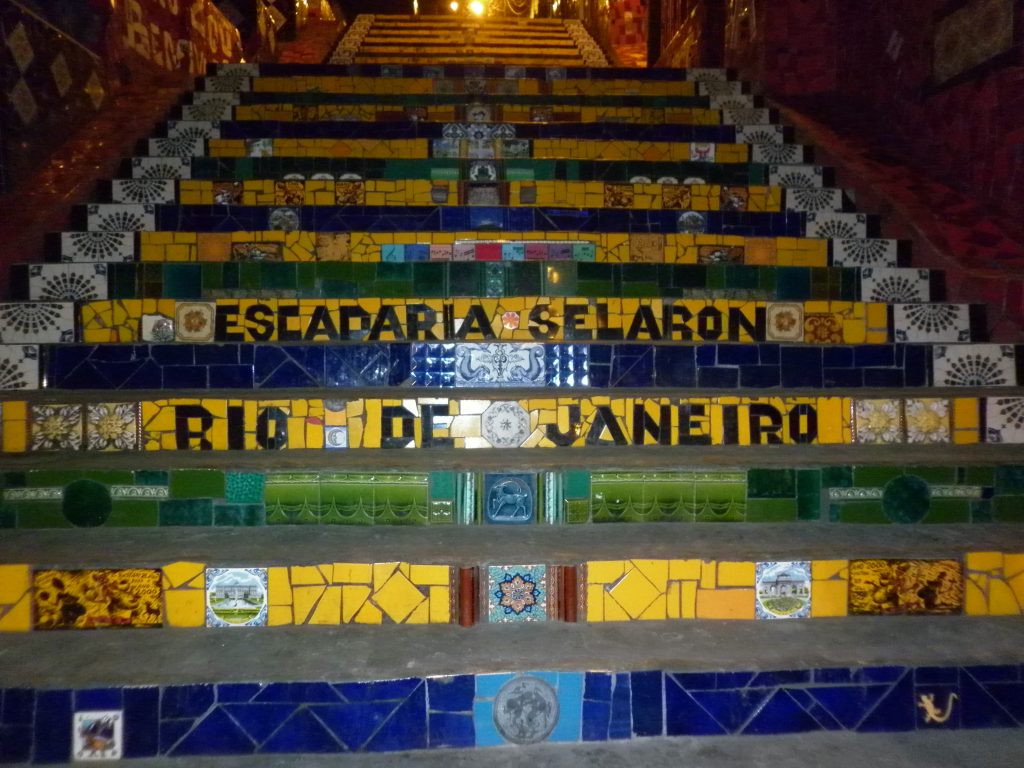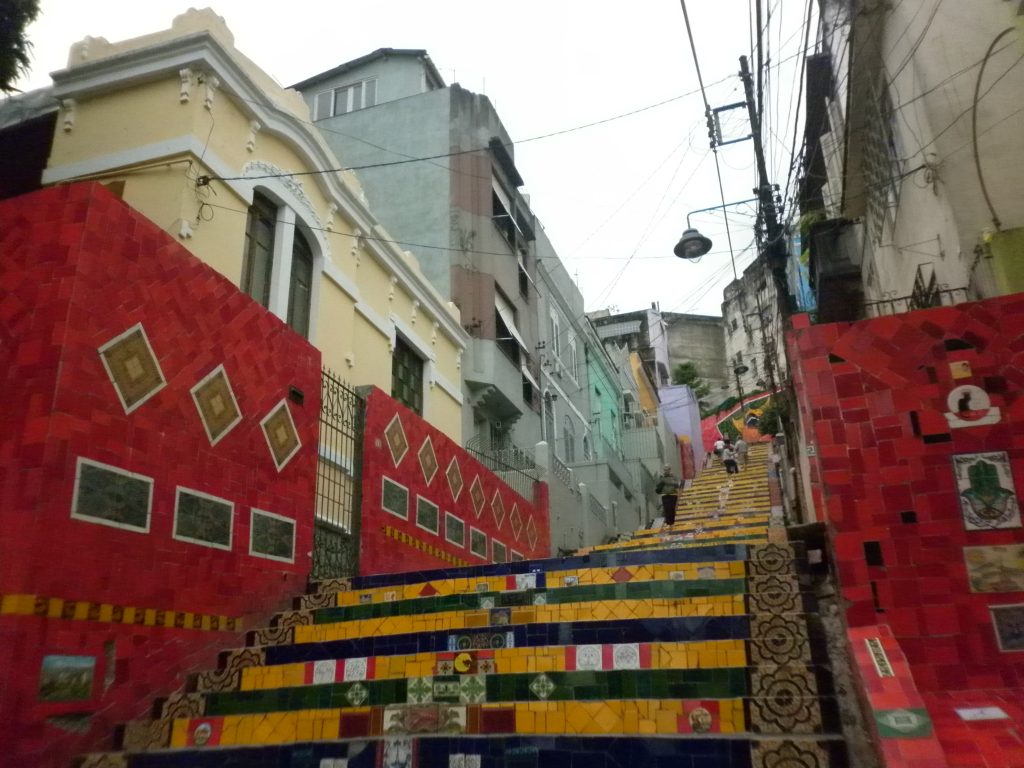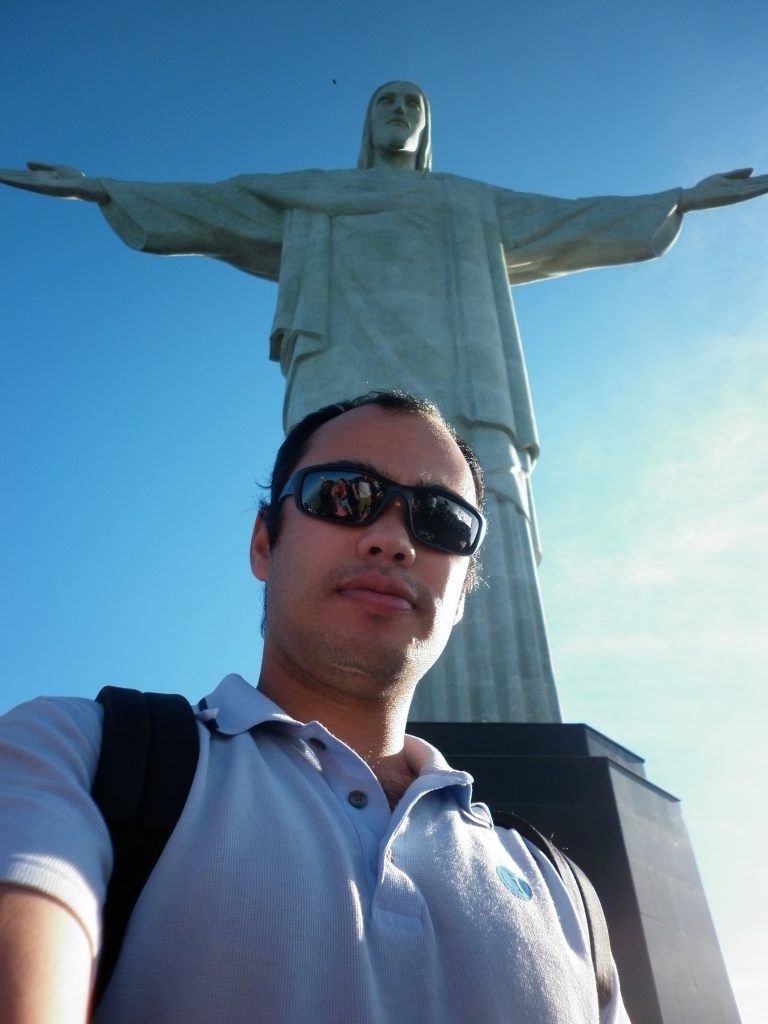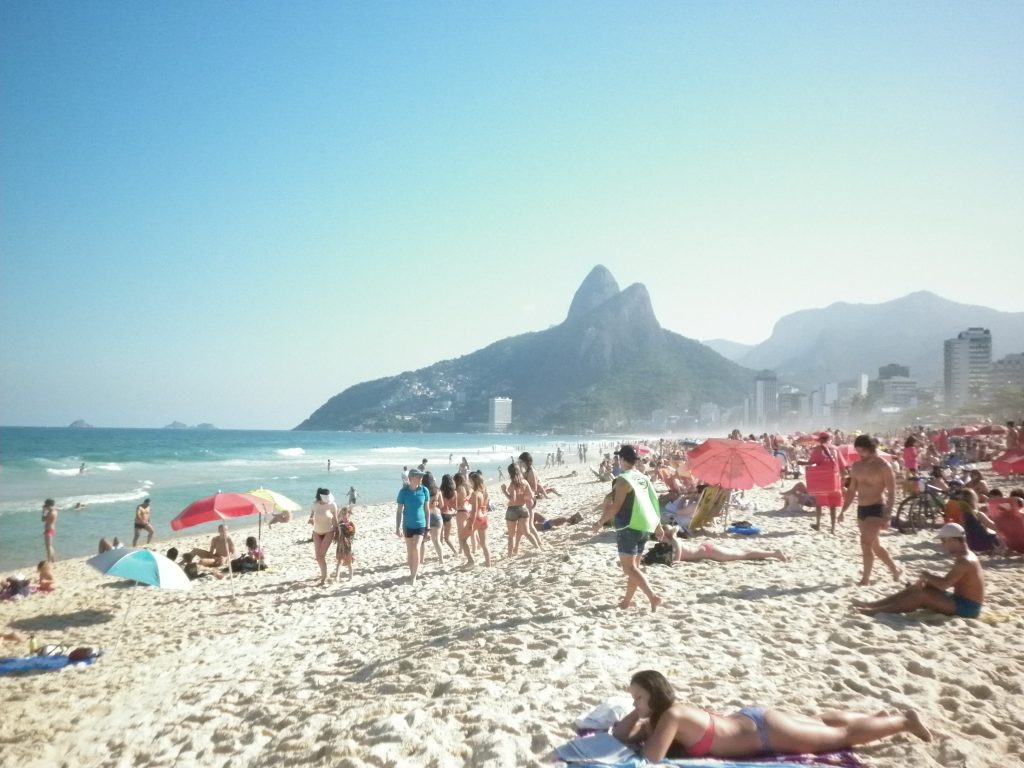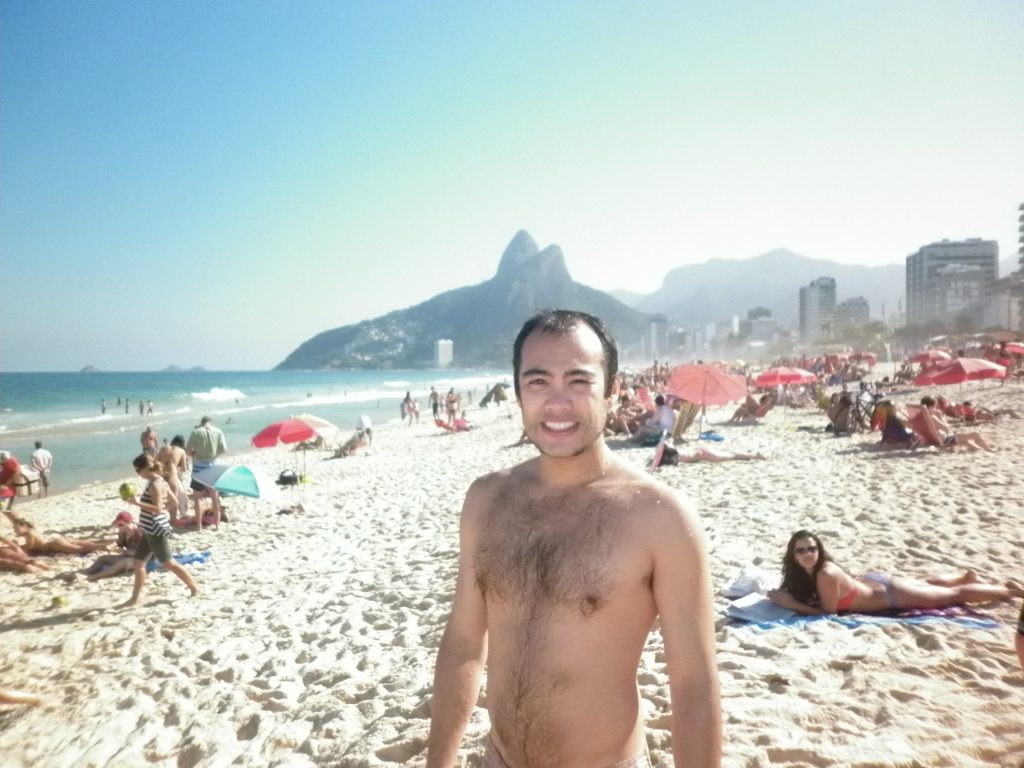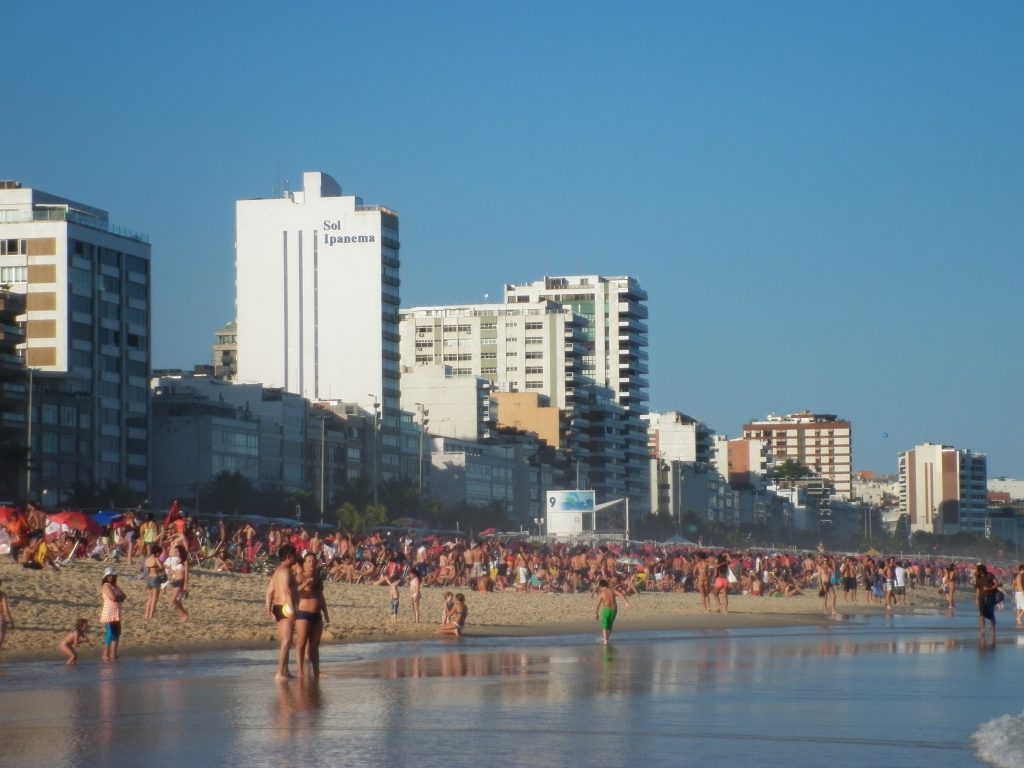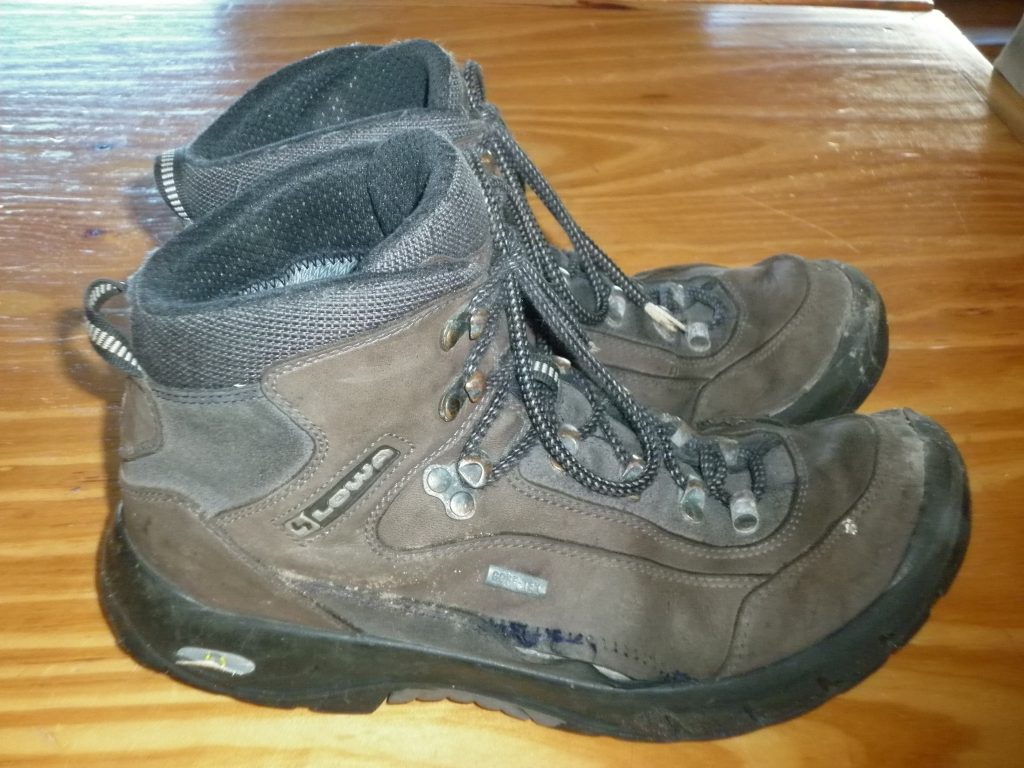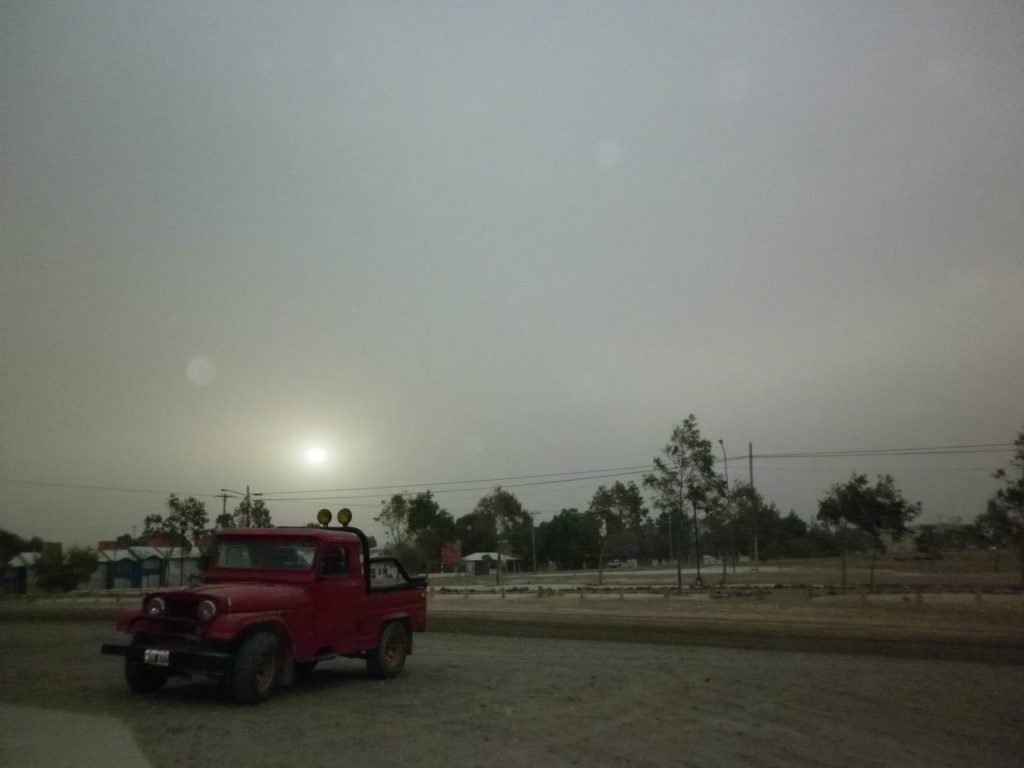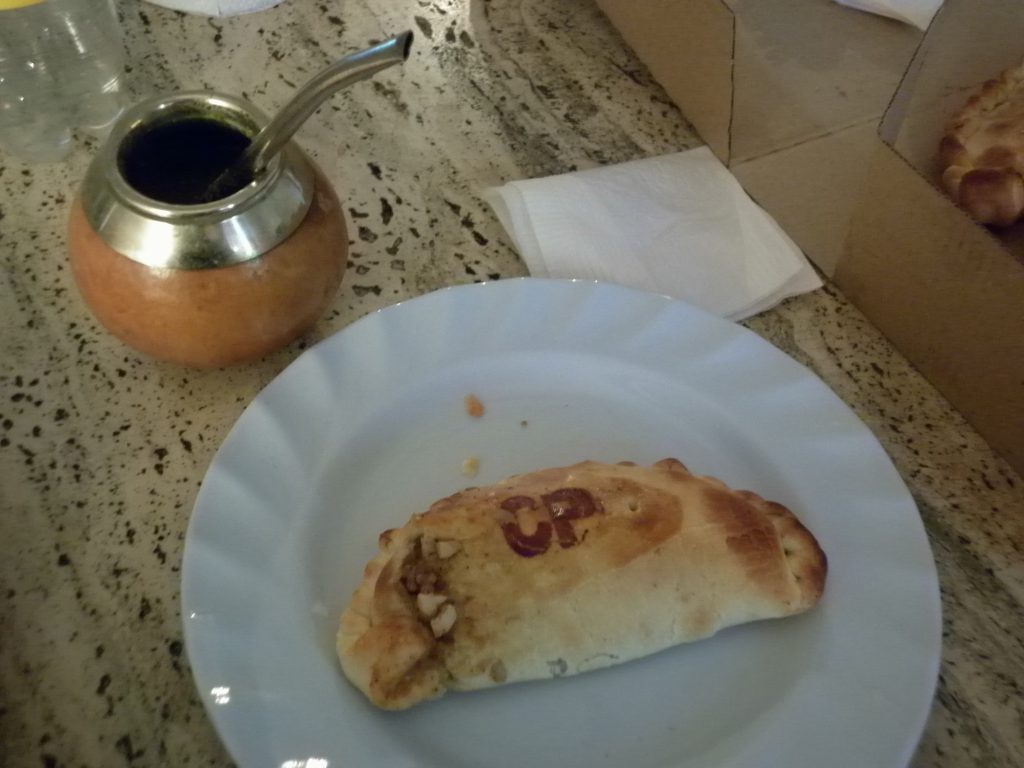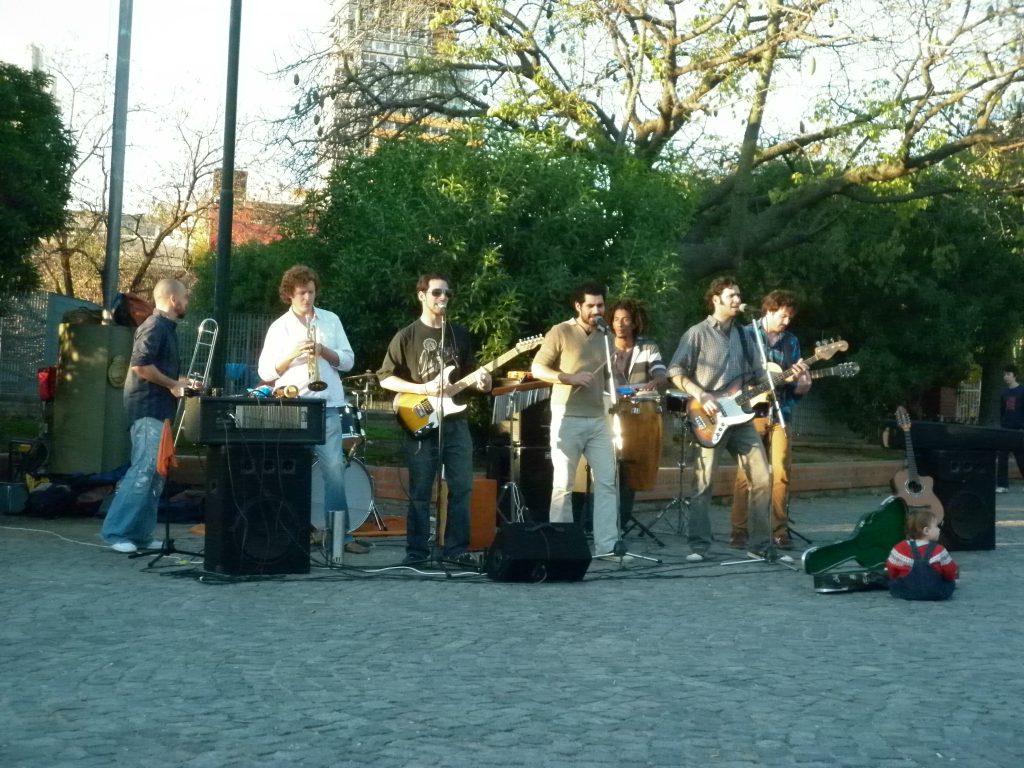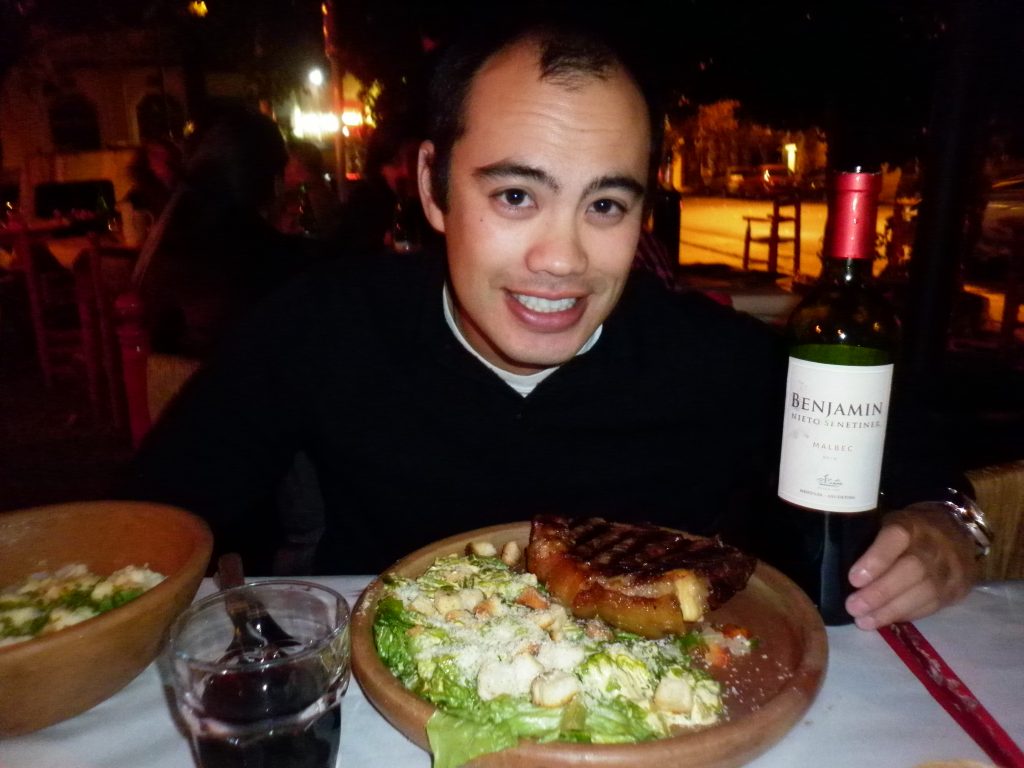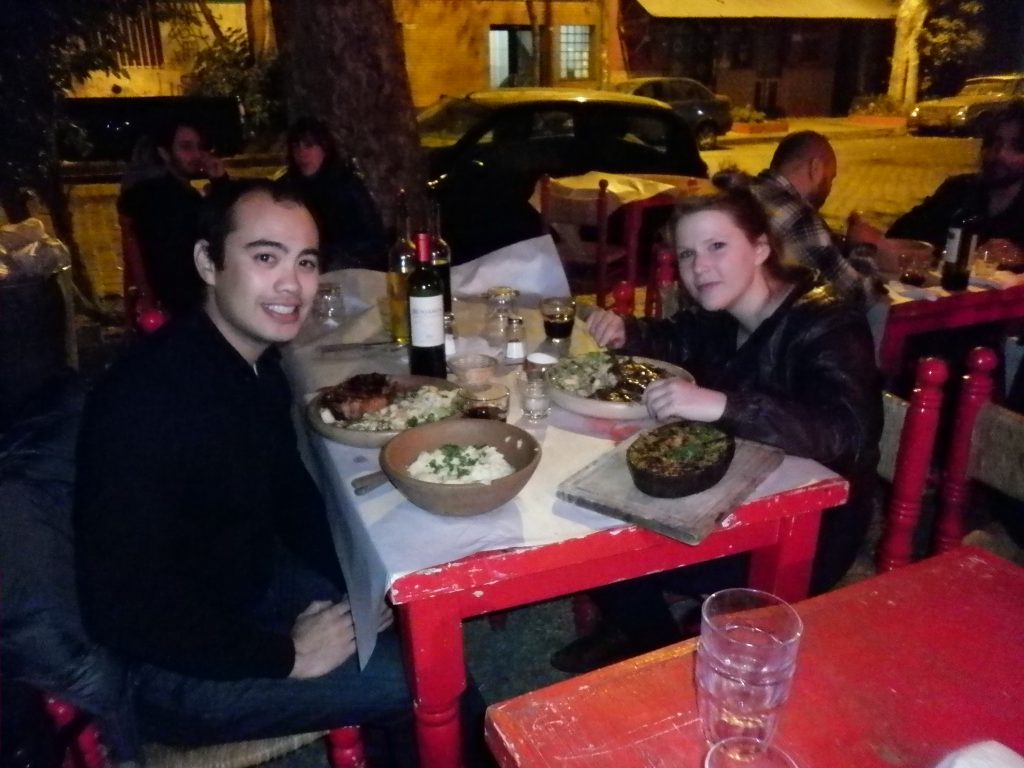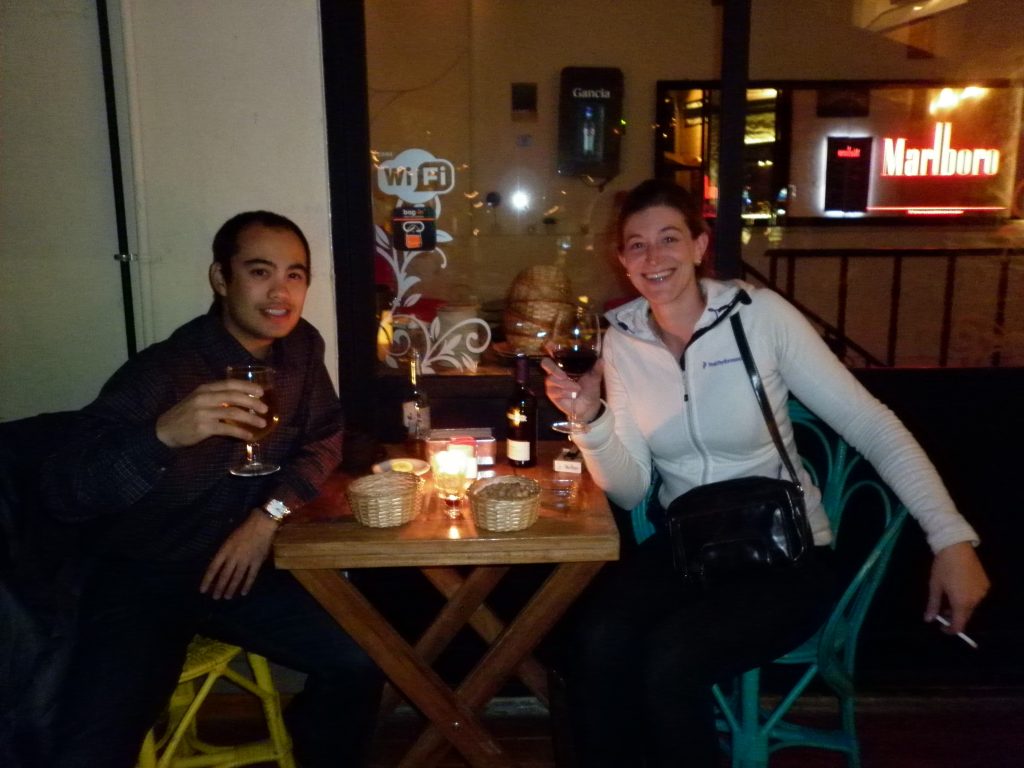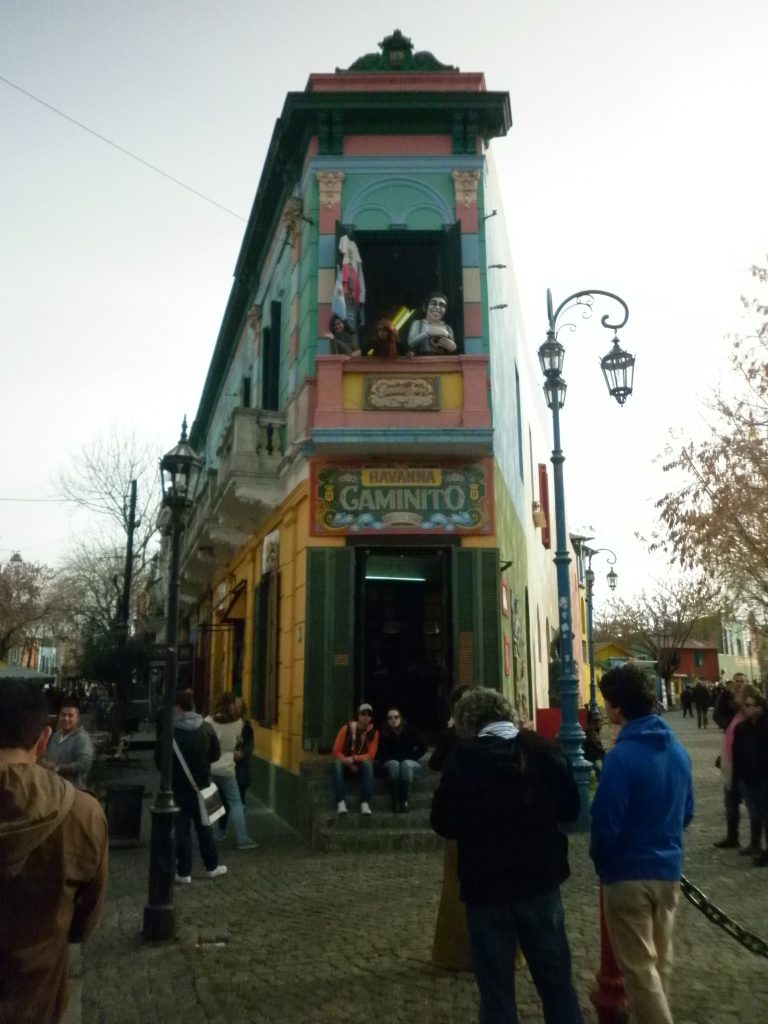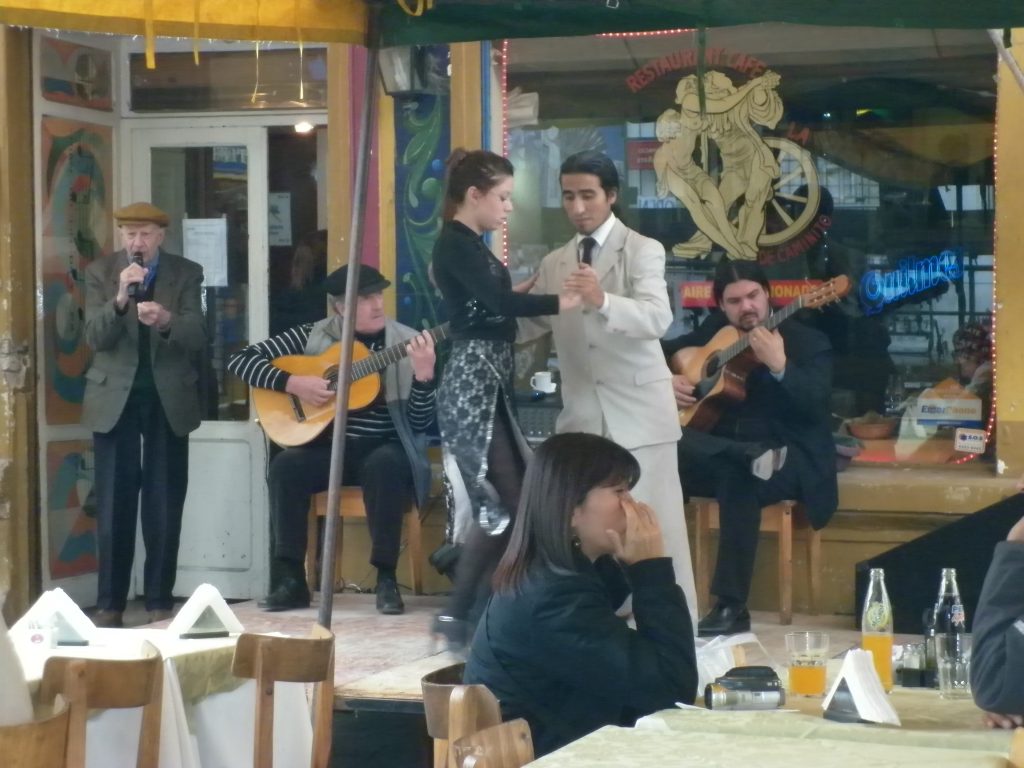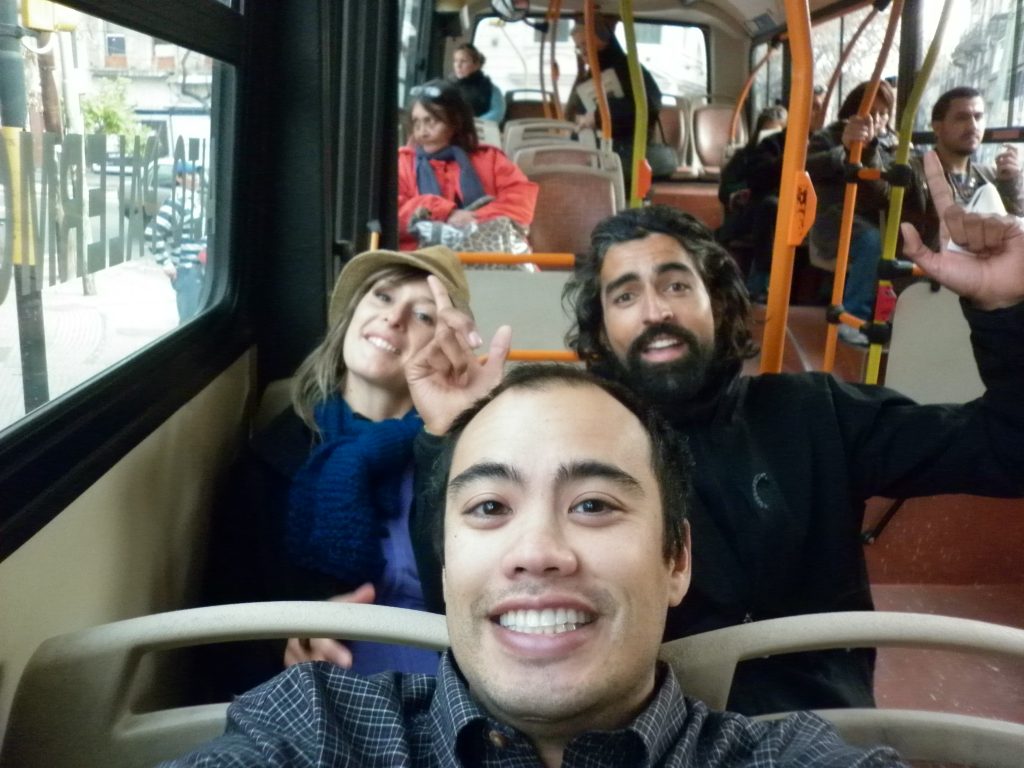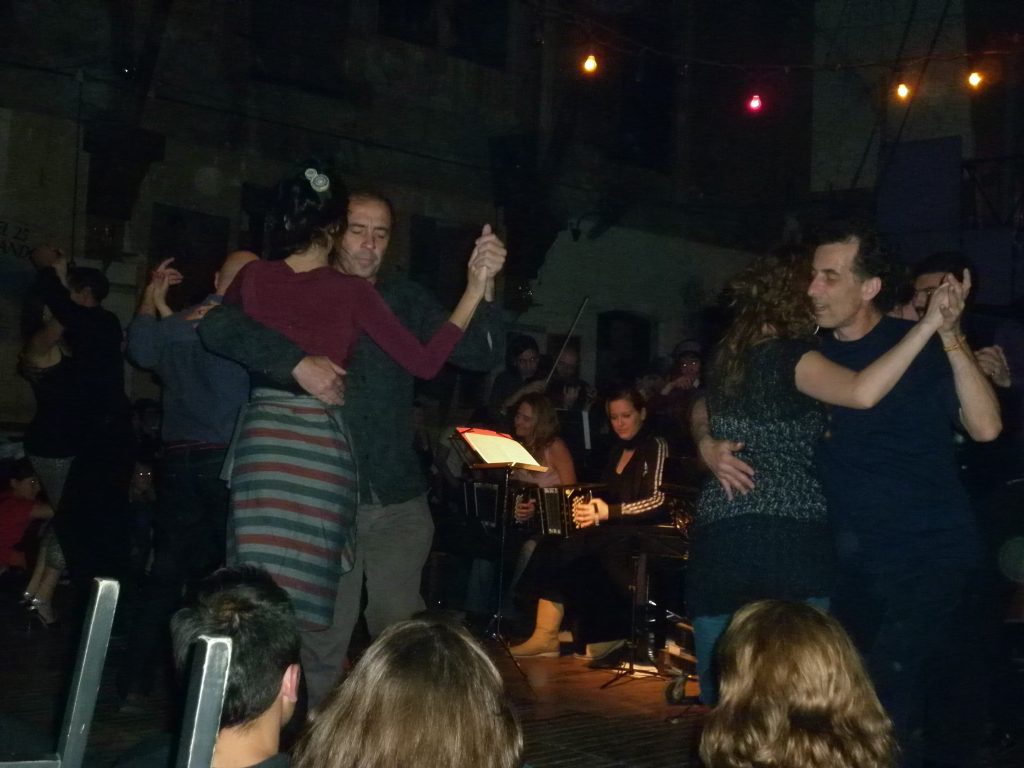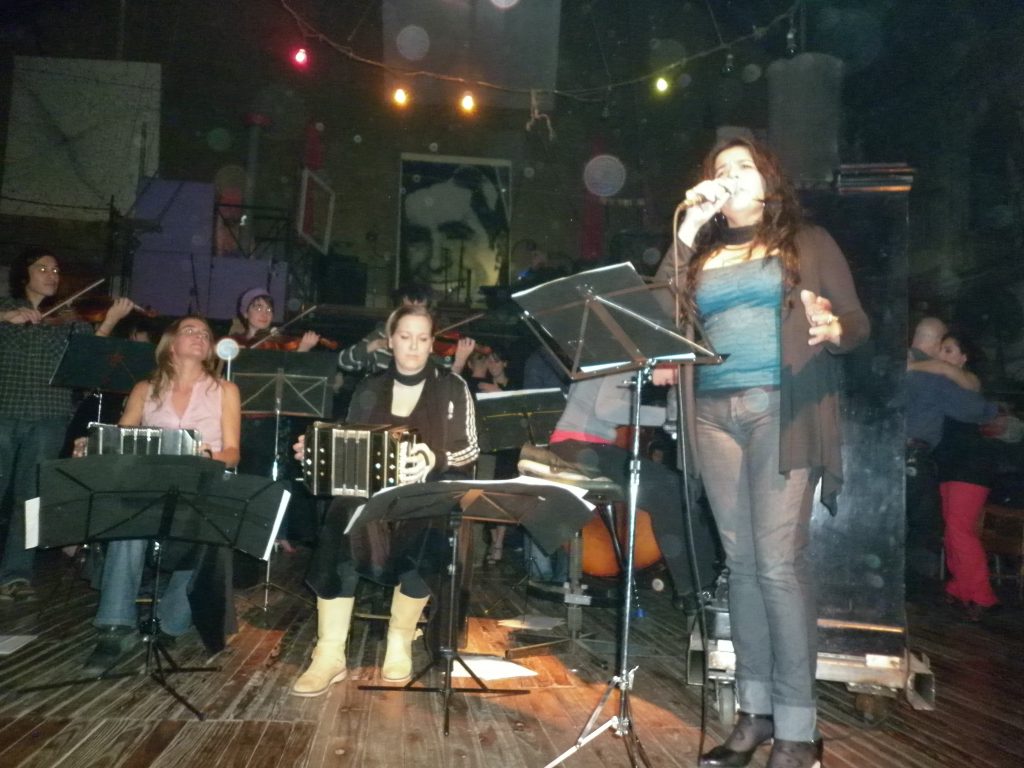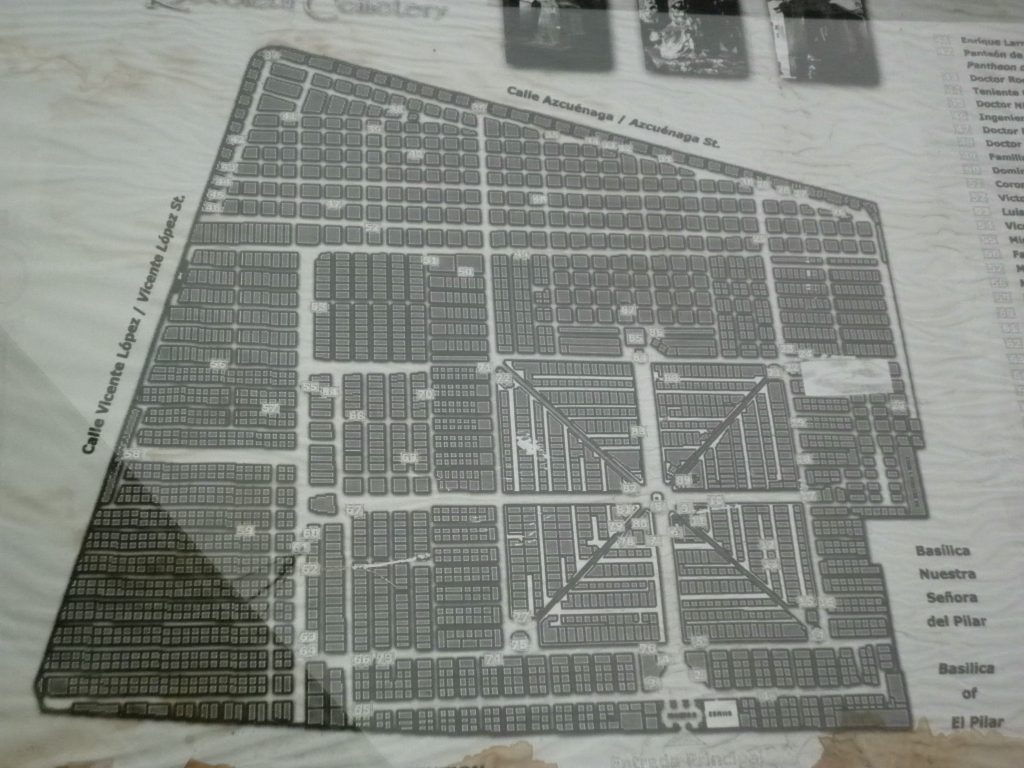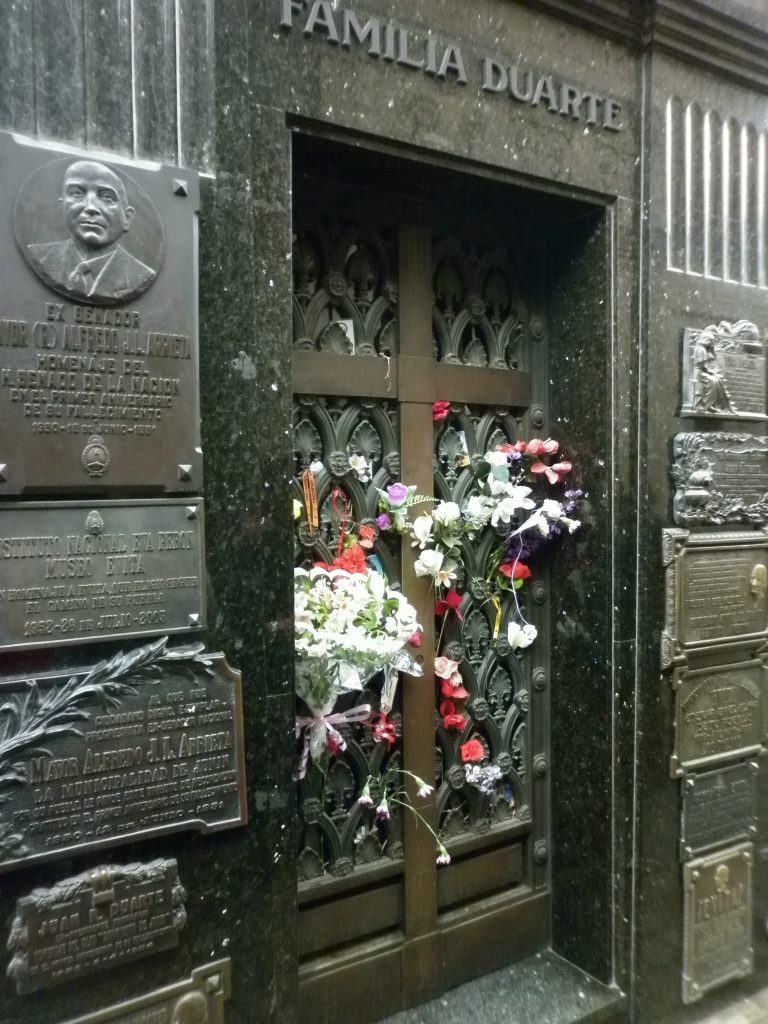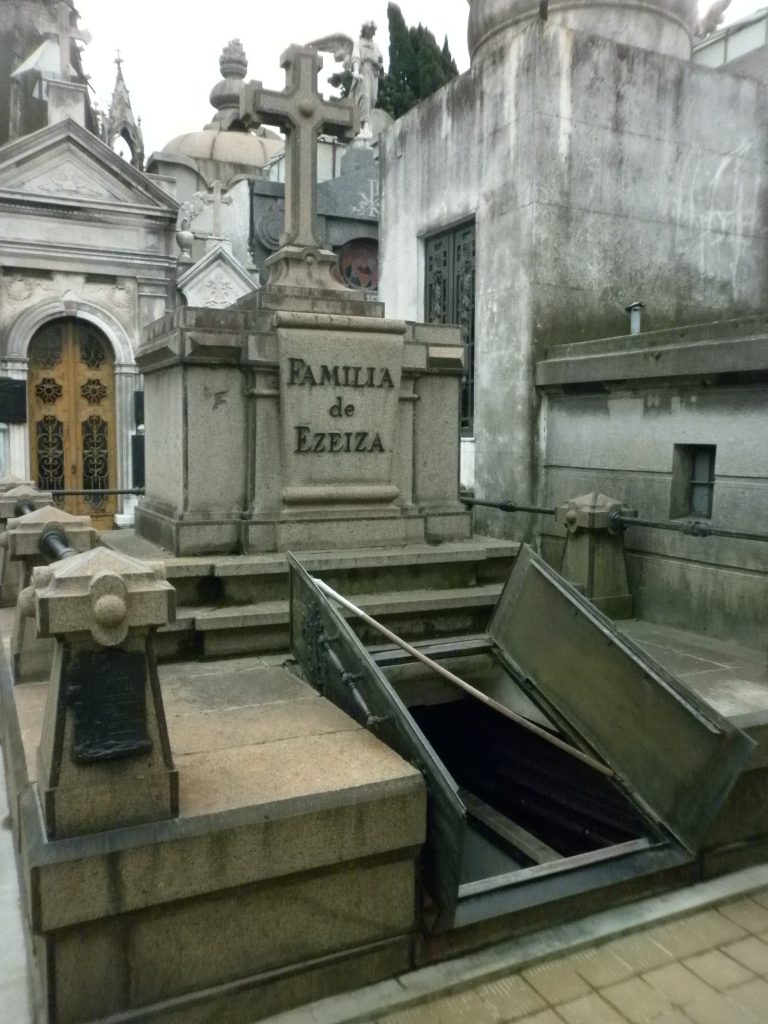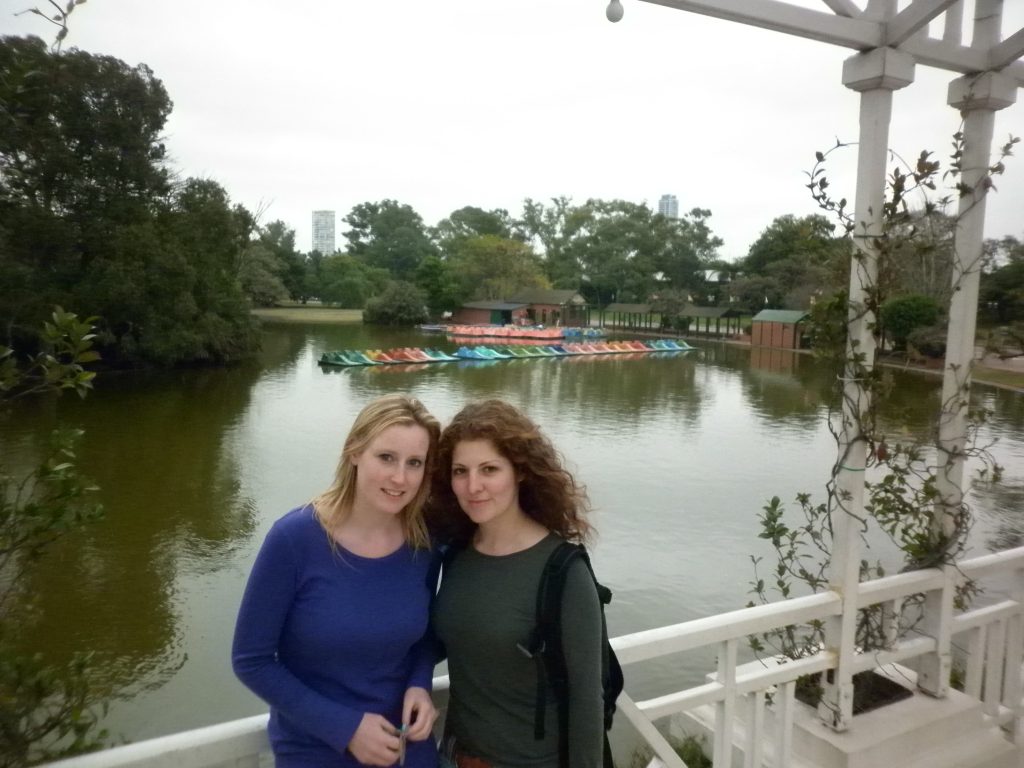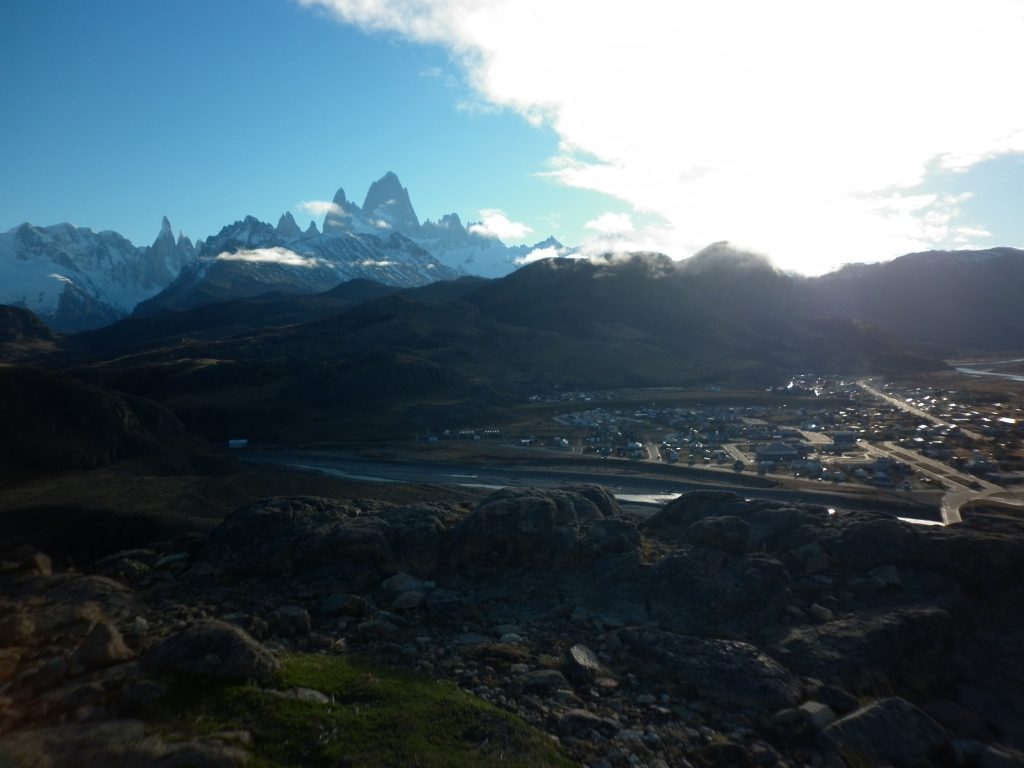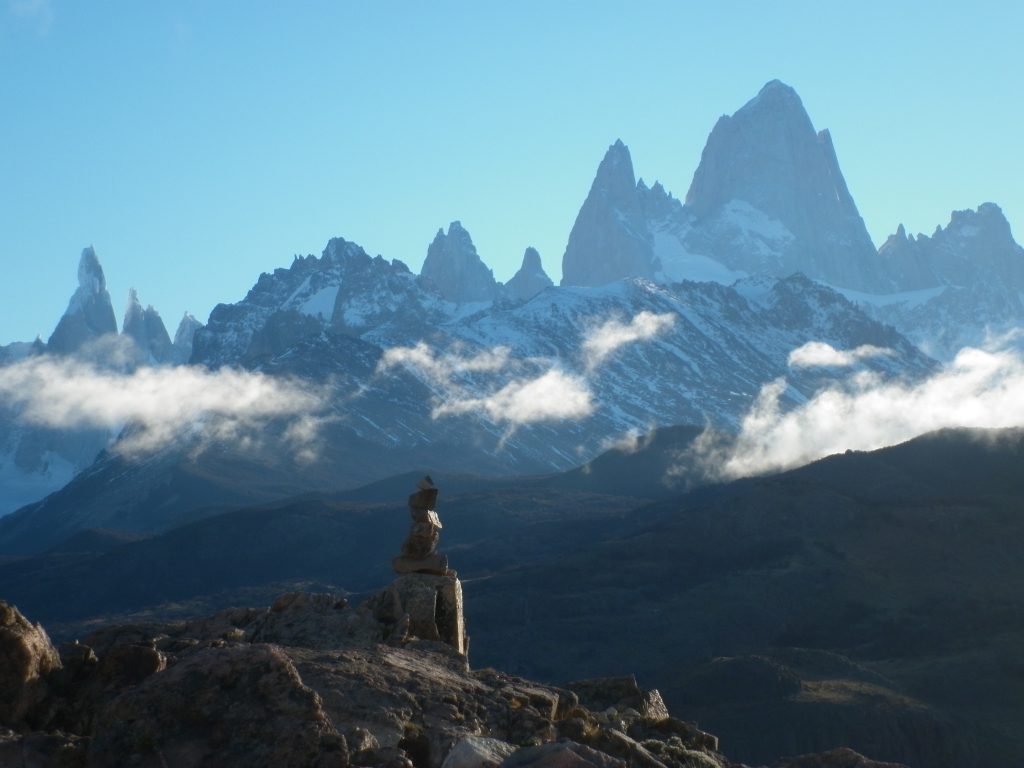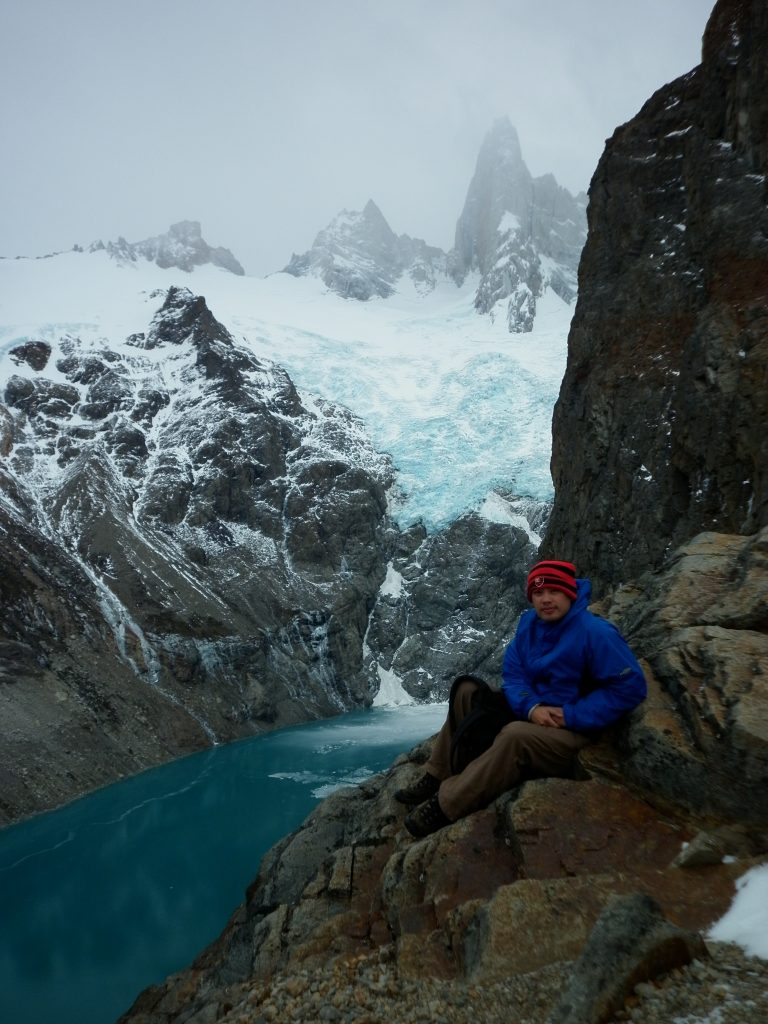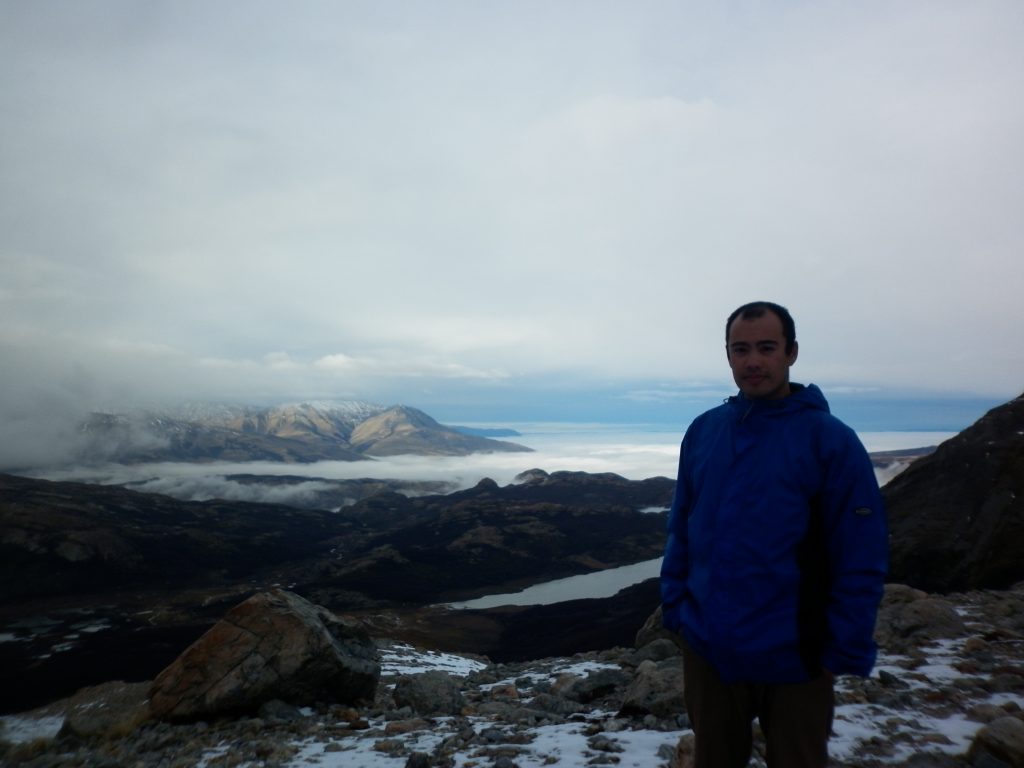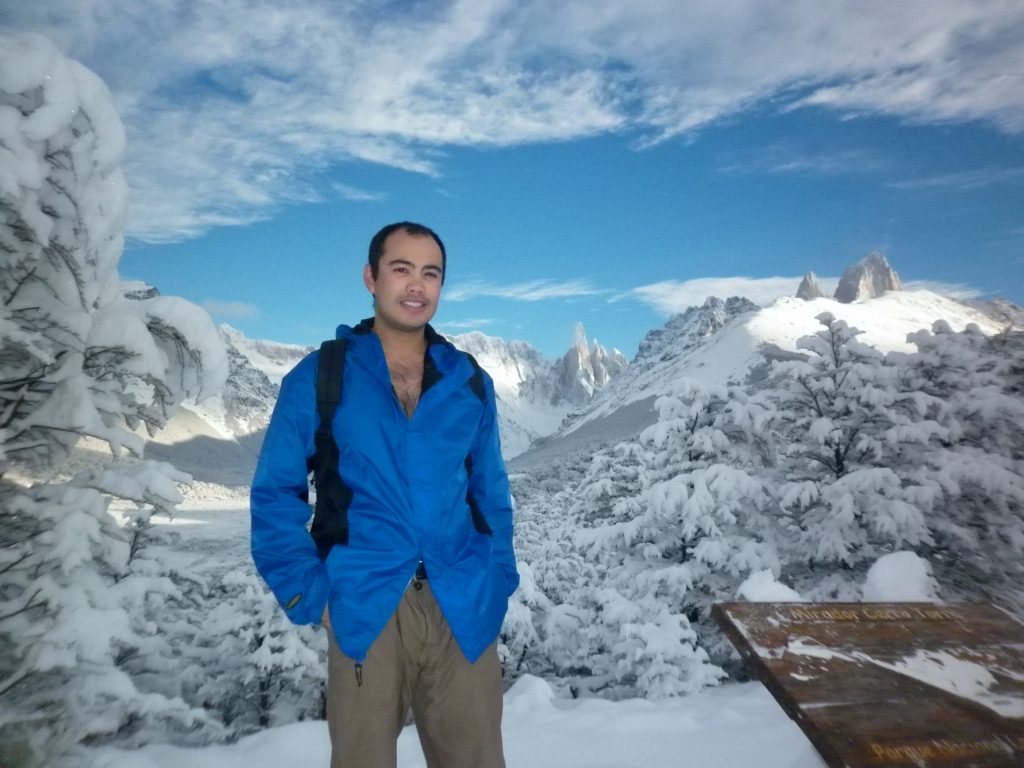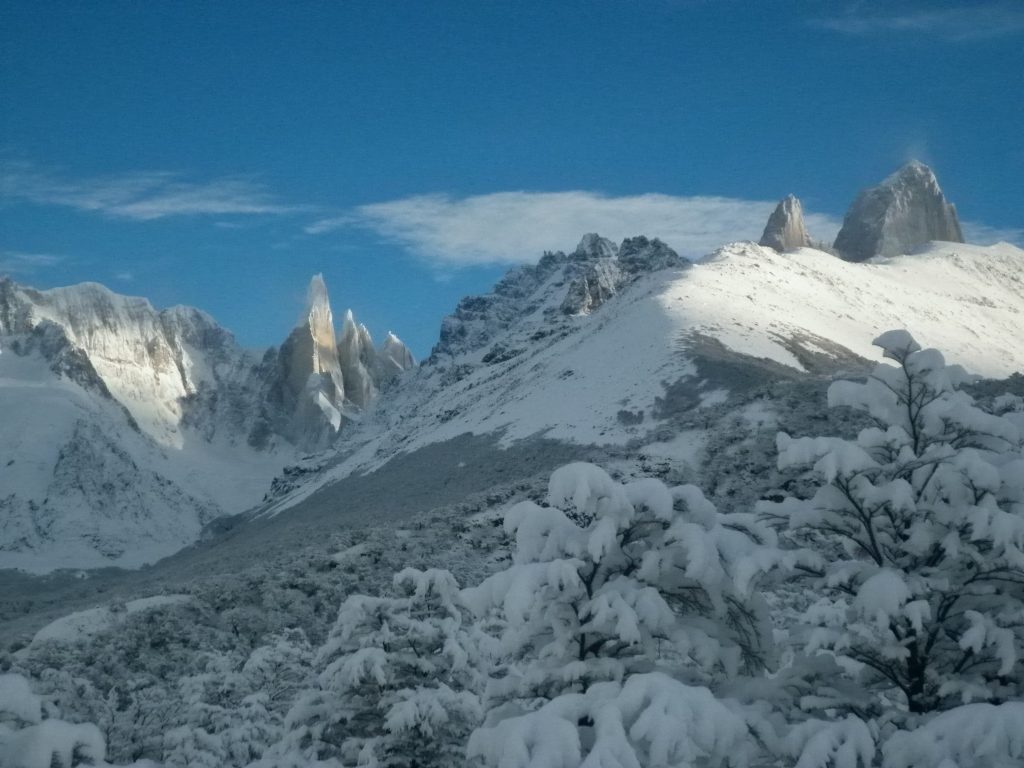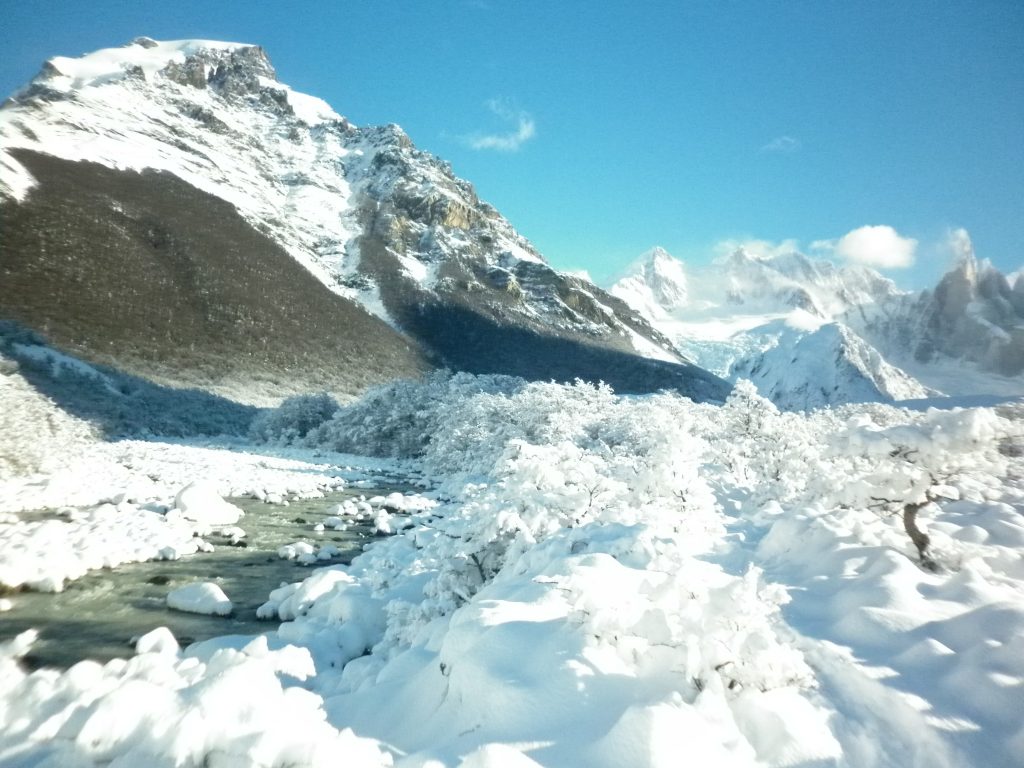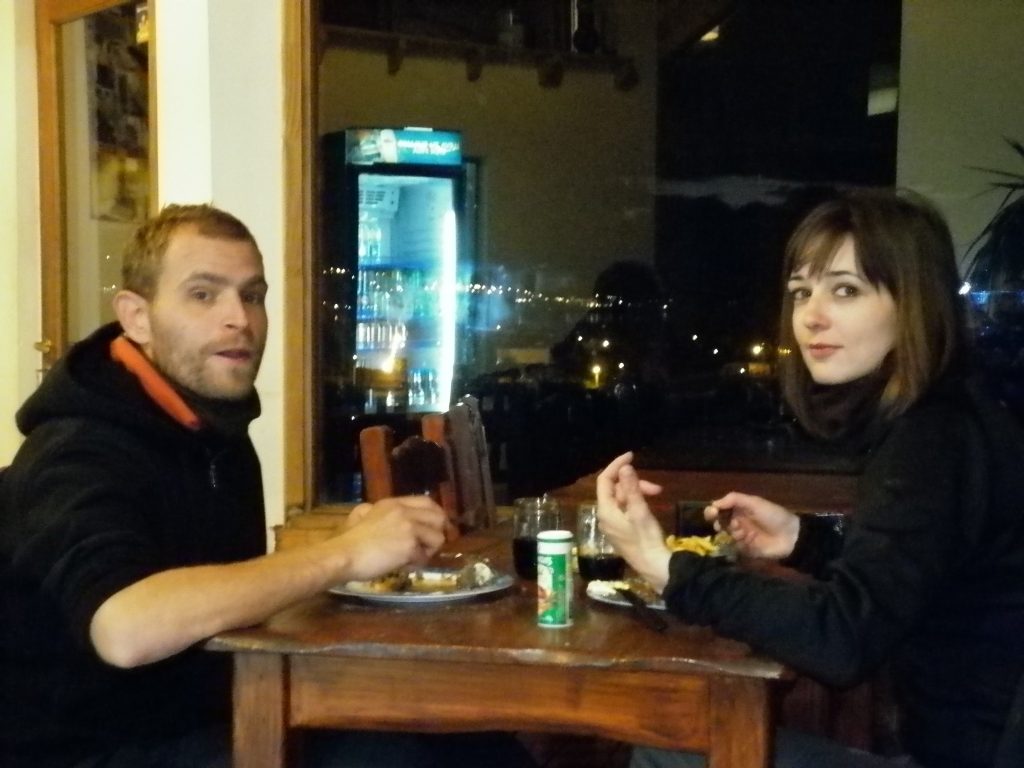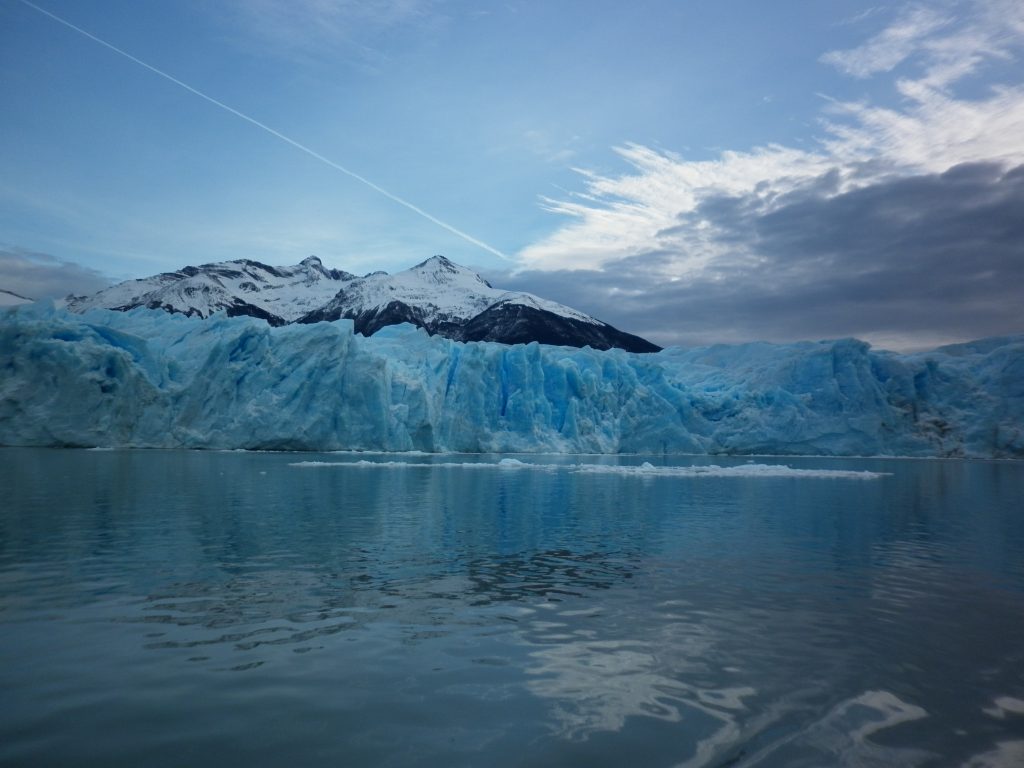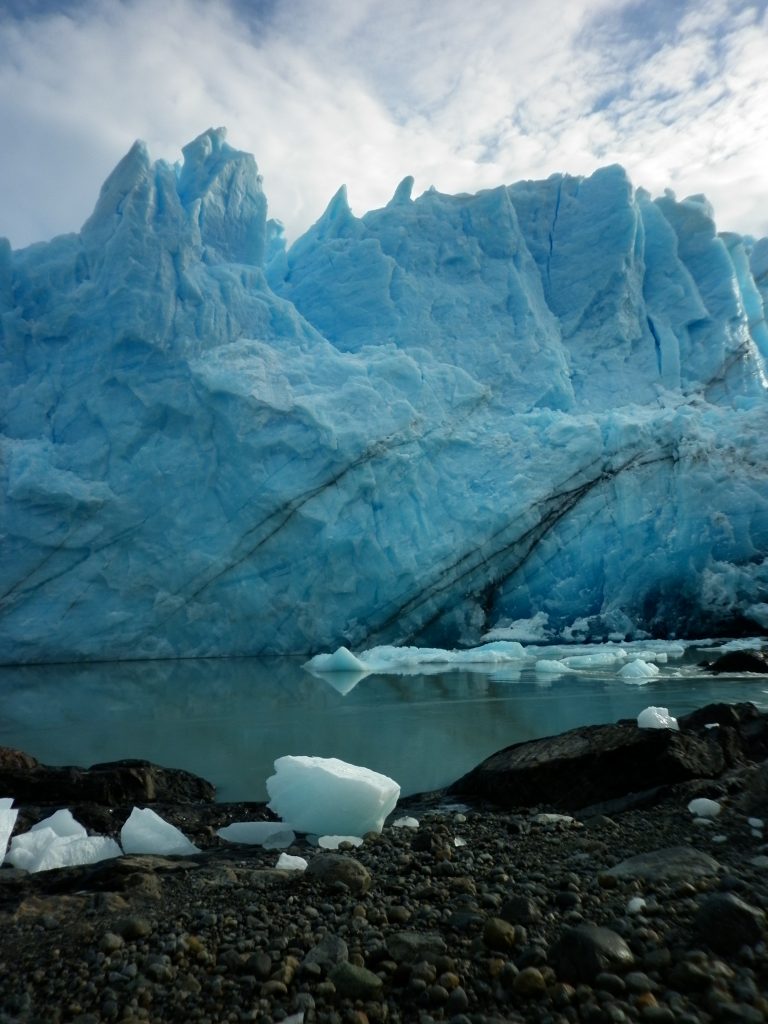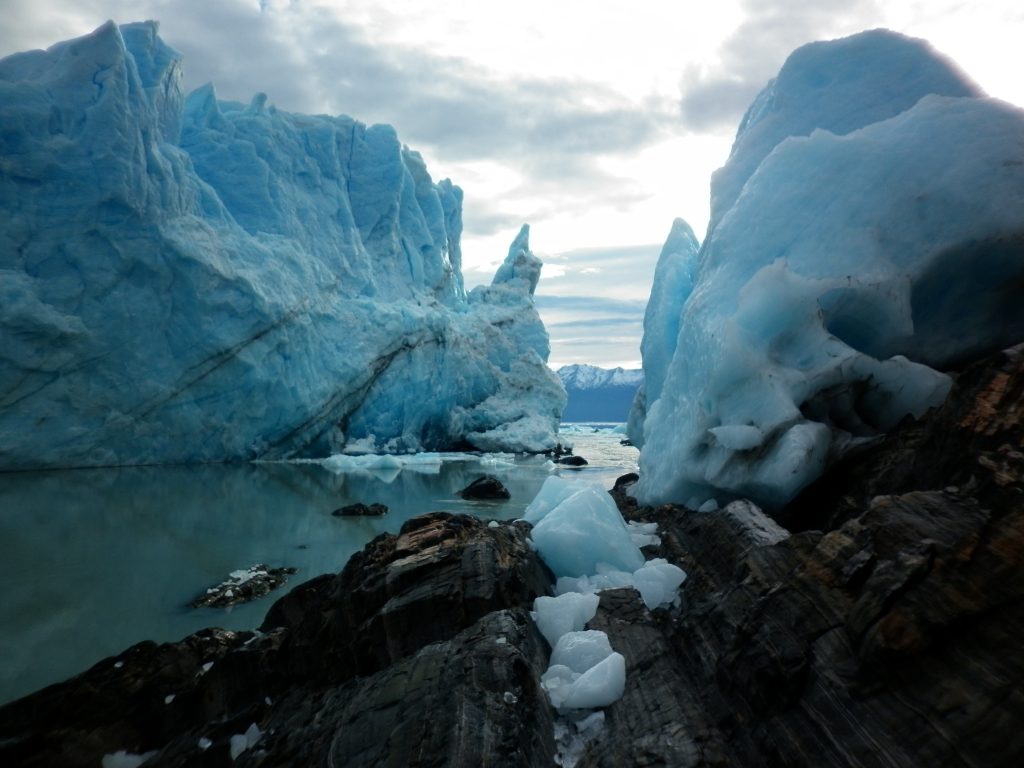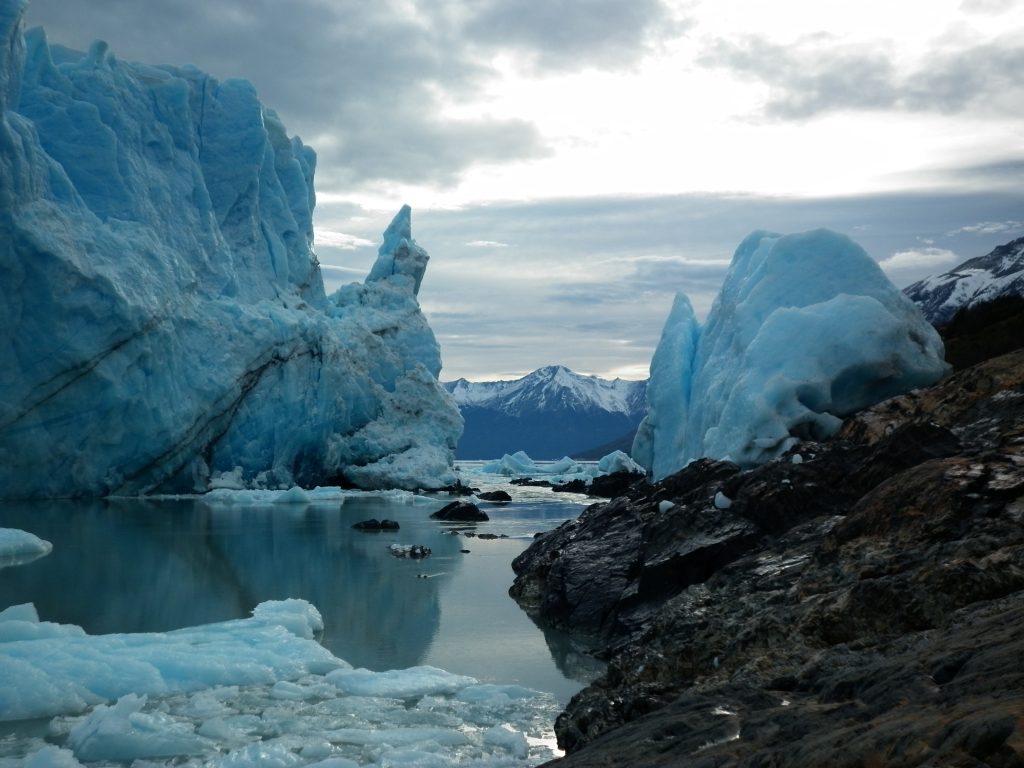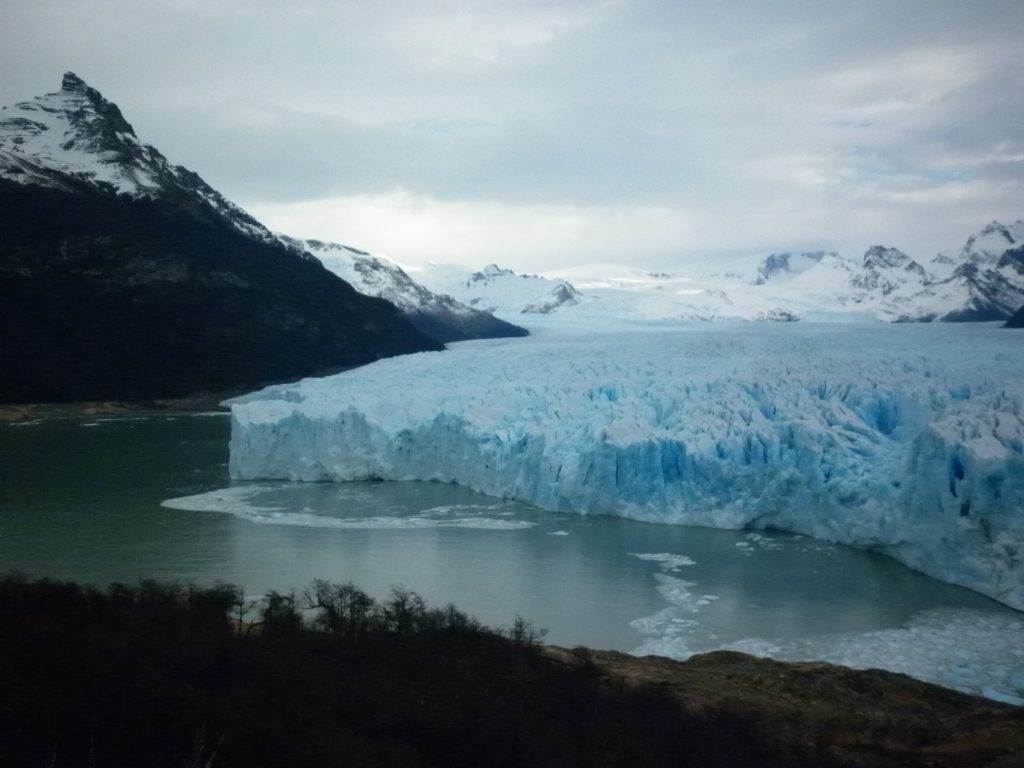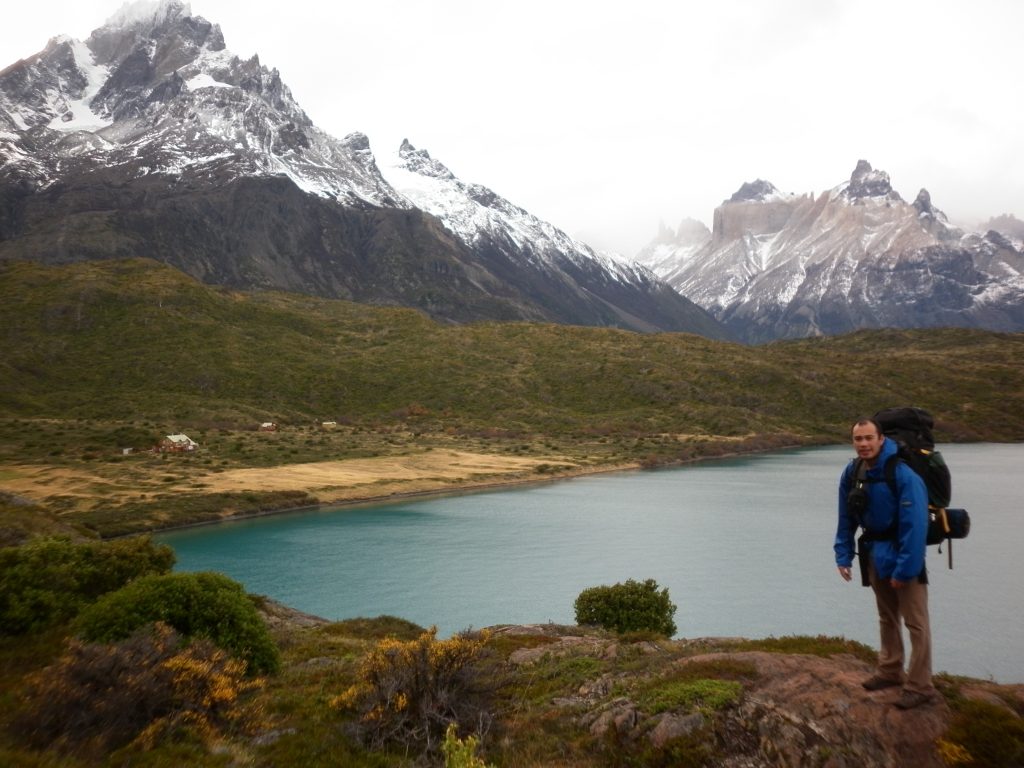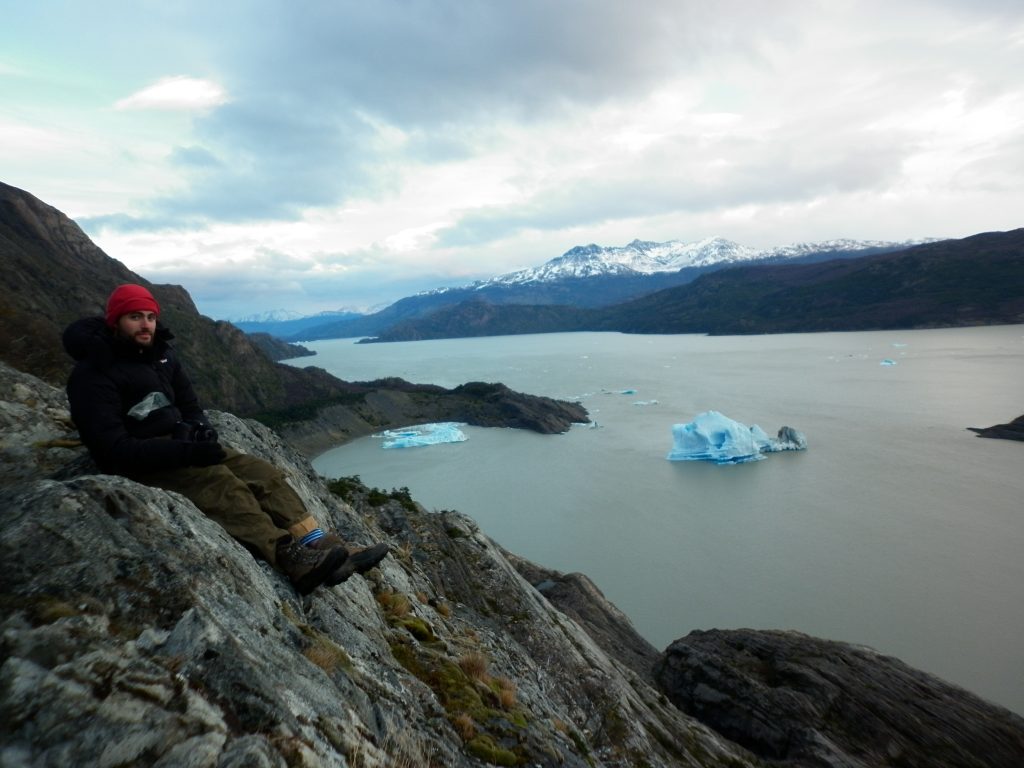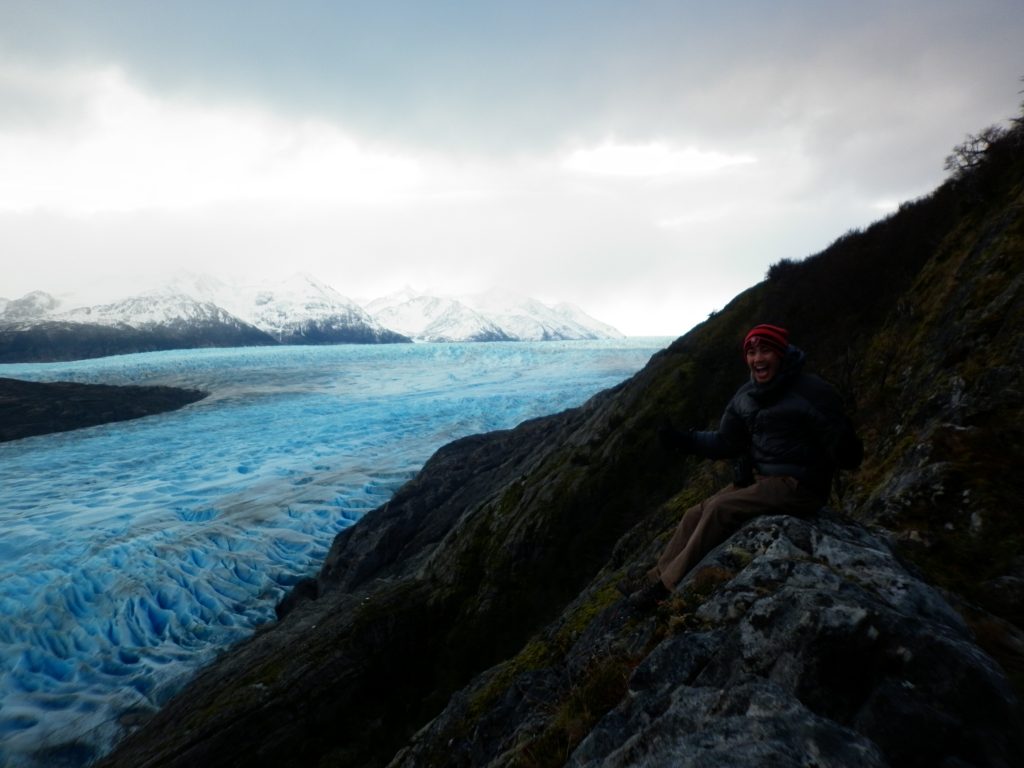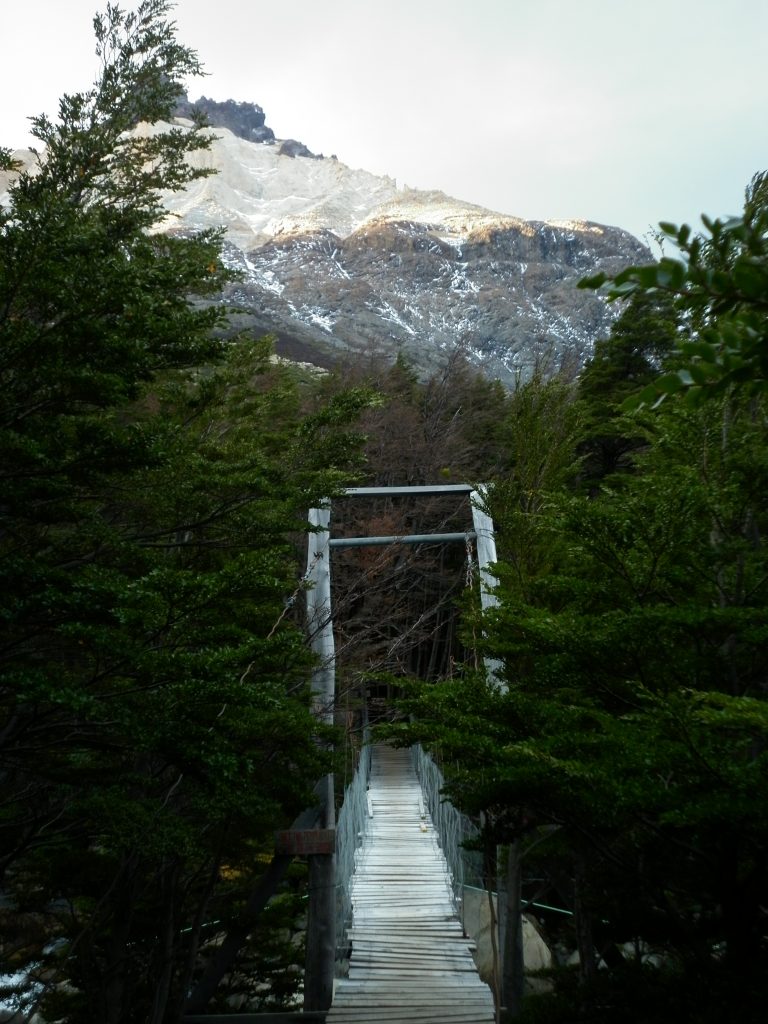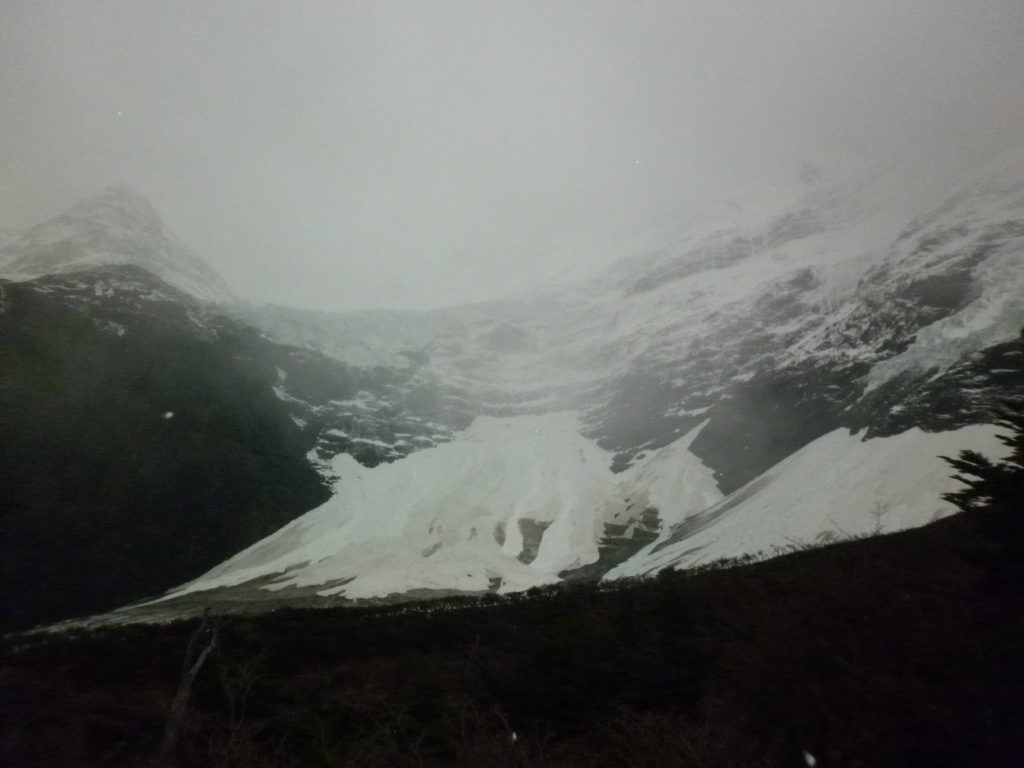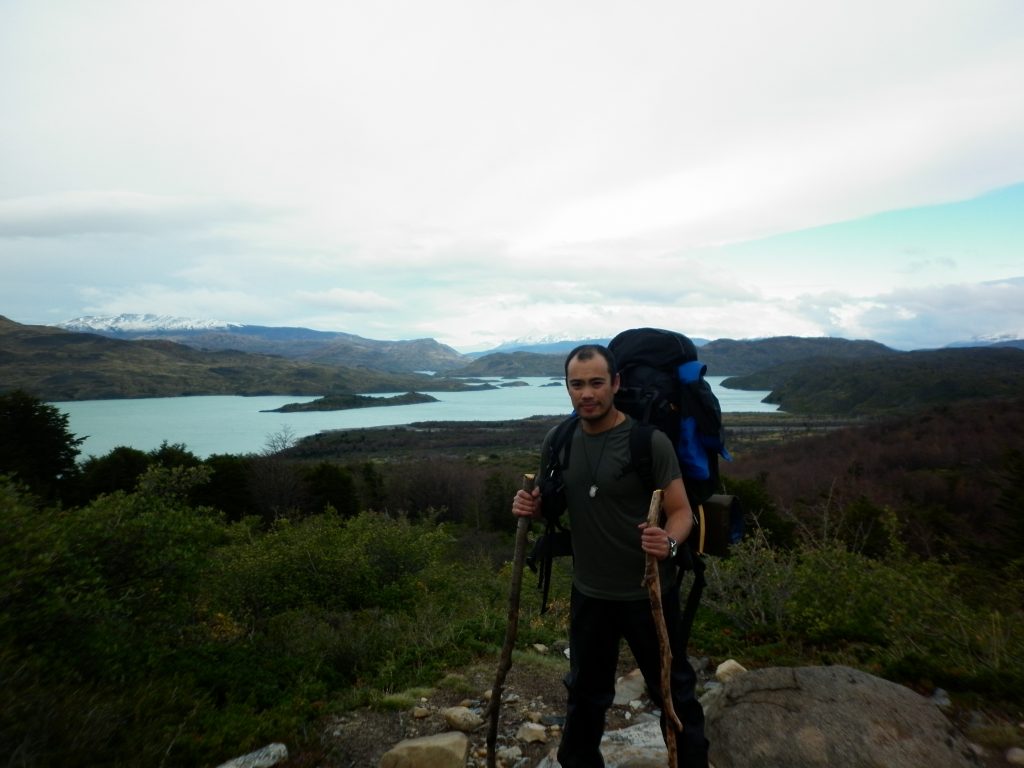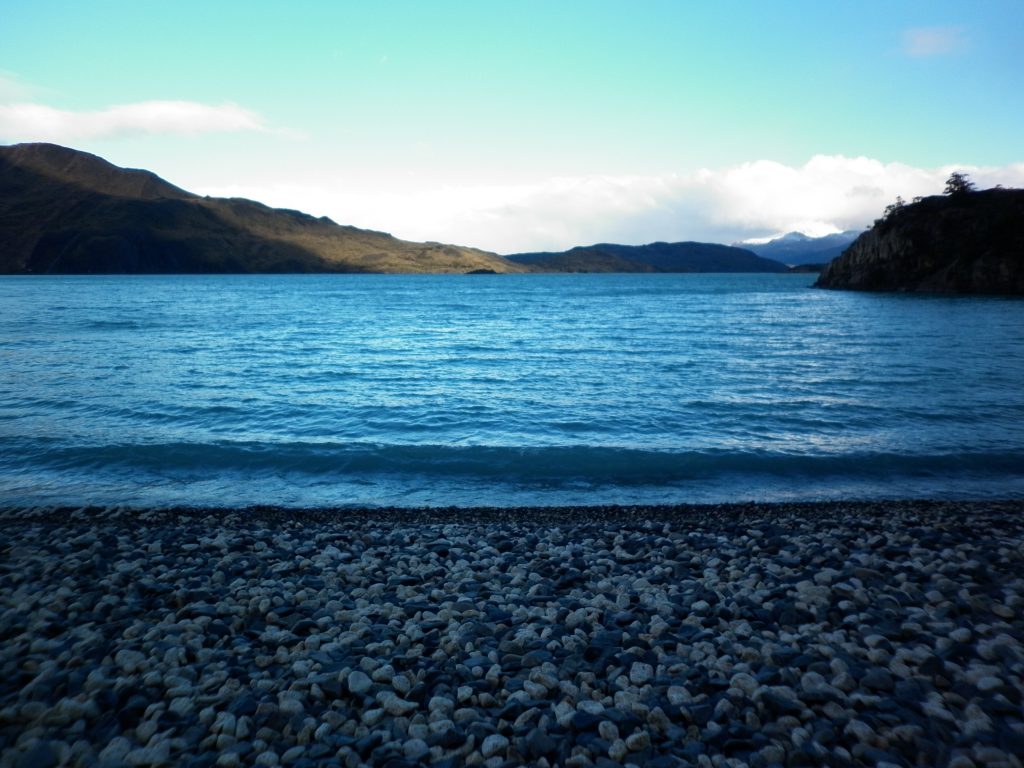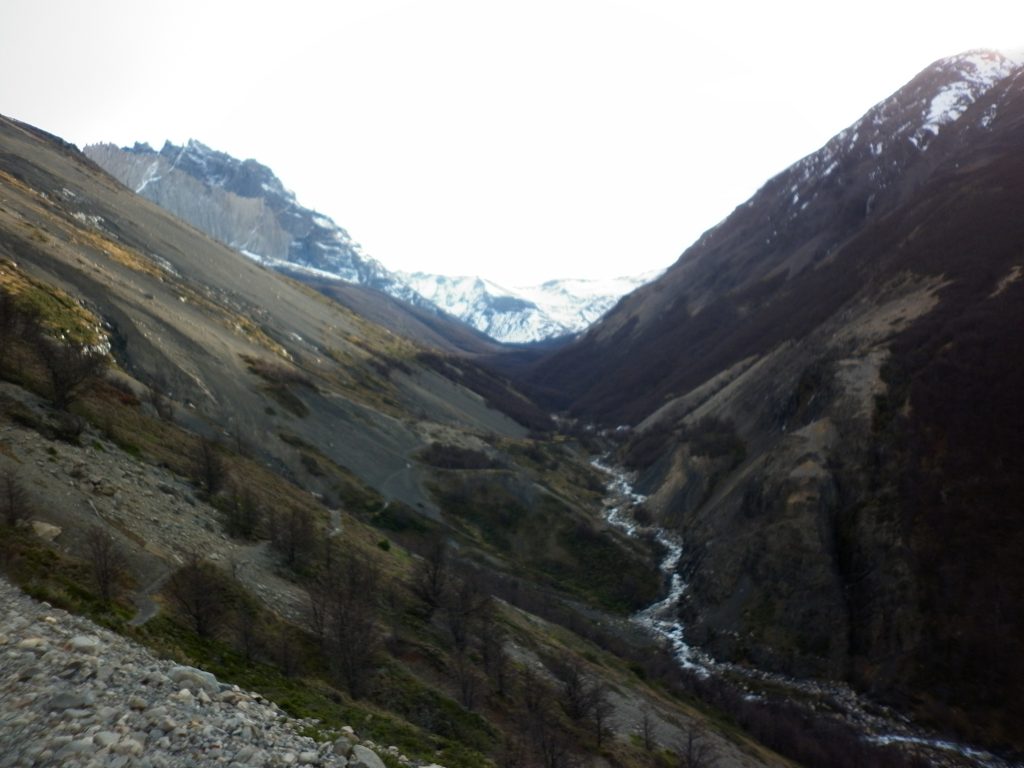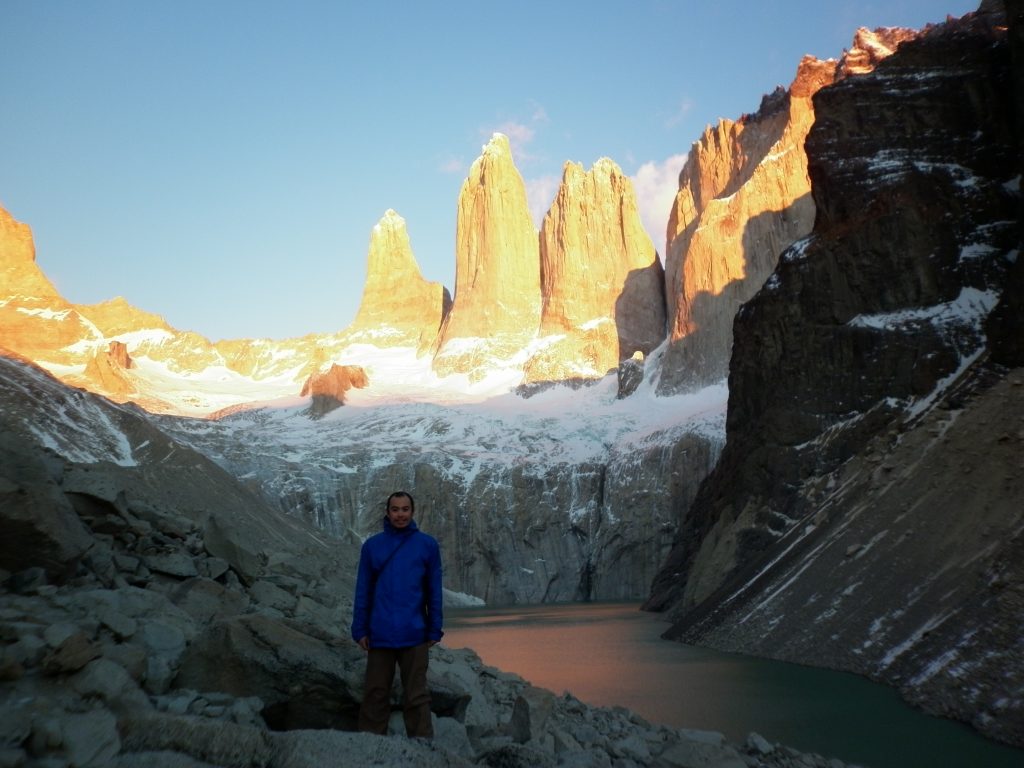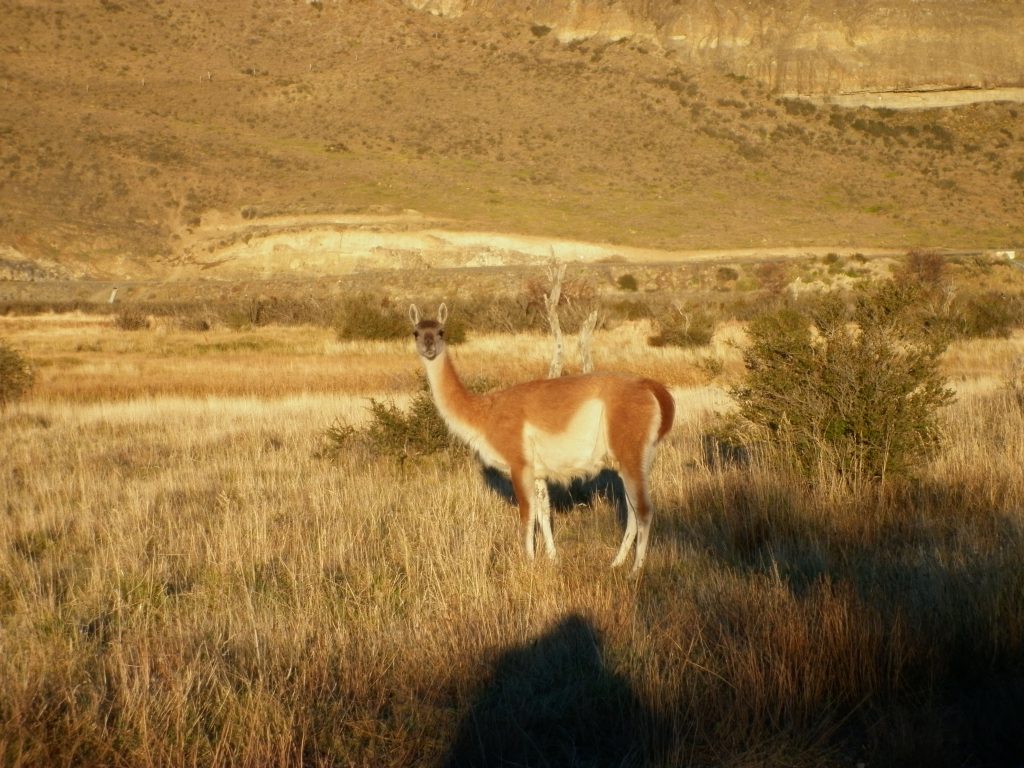May 27, 2011. I had stayed up late the night before packing my backpack for a 6-day/5-night W-trek in the Patagonia. I had my food squared away, my sleeping bag, alcohol fuel, sleeping pad, tent, etc. I wasn’t sure how cold it would get and how much clothing to take, so I went with the easiest solution and just packed all my sweaters and long-sleeved shirts. When I woke up, I was ready to go. I had a light breakfast and hopped on the mini-bus that would take me and five others to Parque Nacional Torres del Paine.
In the bus, David from Australia rode shotgun, William and Gaelle from France sat in the second row, and in the last row sat two more French, Philippe and Corinne, and I. Sitting next to Philippe, we learned that we had much in common. He was an avid traveler, had been to India and Australia, was in to SCUBA diving. He had also worked for about 5 years before deciding to do something else and travel. I was immediately struck by how similar his life story was to mine.
The drive to the park was an hour and a half. We passed a bunch of mountains and fields. It kind of reminded me of the mountains in California. We passed a lake and stopped to take pictures. The wind was heavy and very cold. I took one or two photos and then retreated to the warmth of the minibus. I knew there’d be plenty more opportunities to take photos during the hike.
David, William, Gaelle and I were dropped off at Sede Administrativa CONAF office where we signed in with the park. Although it was sunny, it started raining while we were still in the office so I donned my rain gear. We all started off together down a gravel road and then on to the trail. The trail looked like cornrows in the ground, each row worn by thousands trekking the same route year after year.
The sun was about 20-25 degrees above the horizon, obscured by clouds most of the time. It was interesting to me that it never rose much higher than that in that part of the world. Apart from when the sun actually sets, it always felt really late during the day. Back in Zambia, I used to be able to accurately tell the time by looking at the sun. If I had done that in the Patagonia, it would perpetually be 5:30 pm.

This is on day 1 of the hike. This is our first glimpse of amazing things to come.
It took us 5 hours to walk to the Refugio y Area de Acampar Paine Grande. There lies a small hostel and area for camping. We utilized the cooking building, a circular house on stilts, and hung out there most of the night. I had brought my Kindle and read an article from the Wall Street Journal to my trailmates. Outside, it was beautiful. The stars shined brightly on a clear dark sky. David said it was like looking at the stars in “high-definition.”
At the campsite, I realized something terrible. I was in such a hurry to leave Easter Island on the morning of my departure that, in addition to not being able to say proper goodbyes to everyone that I had partied with the night before, I also forgot to pack my poncho, which served as a tent footprint and pack cover, and my rainfly! Without the rainfly, my tent was useless to me, 2 lbs. of deadweight that I’d have to lug around for the rest of the trek.
I pitched my tent right on the hostel porch because it would protect me from rain, which was a wise move because it did rain that night.

The view above Refugio y Area de Acampar Paine Grande.
I was up before sunrise. I made some oatmeal and drank a cup of Carnation Instant Breakfast in the dark. The others woke and also prepared their breakfasts. Gaelle and William set out earlier than David and I because their itinerary was a little bit different than hours. David and I set off together towards Campamento Los Guardas. His pace was little bit faster than mine so we ended up not hiking together most of the time. He stopped at Refugio Grey to wait for me and look at the mirador there. I continued past Refugio Grey and on to Campamento Los Guardas so I arrived at the camp before David. I was pretty tired and just wanted to go straight to camp.
I walked out to the mirador and saw Glacier Grey. It extended far out to the horizon. I took a couple of pictures and went back. David arrived and we walked out to the mirador again. This time we just sat perched on a steep cliff and admired the natural beauty.

Glacier Grey. Look how it goes all the way out to the horizon. Simply amazing! This is the first glacier I've seen in my entire life!
At one point, I took off my gloves and took a picture of David. Then I asked him to take one of me with my camera.

This is the picture I took of David right before I lost my gloves. Look how steep the cliff is! Look how high we are!
As I passed my camera to him, the wind blew and my gloves went off the cliff to a lower ledge. I thought they were lost initially because the cliff was so steep and to get to my gloves would require me to maneuver along an edge that was not much wider then my foot. I thought the gloves would be blown even further, but they remained for the moment. So, I started climbing down slowly towards my gloves. All I could think of was maintaining three points of contact with the rock at all times. I had to put the idea of falling to my death out of my mind. What was funny was the fact that I kept saying out loud, “I’m so scared. I’m so scared. I’m so scared. I’m so scared. I’m so scared. I’m so scared.” I really was!

The rescue mission. This photo doesn't capture how high and steep we were. That look on my face is one of complete and utter fear.
But the rescue mission was an overwhelming success. I got my gloves back! I climbed back up to where David was perched. We took more pictures, admired the beauty, and then headed back to camp.

- I got my gloves back!
Camp for me that night was in a dirty, rat-infested cooking shelter. The rat droppings on the wooden table were a tell-tale sign of its unseen inhabitants. However, the shelter met my criteria for a proper campsite in that it would provide adequate shelter from rain and wind. I brushed the rat droppings off the table with branch and set my sleeping pad and sleeping bag on the table. David and I cooked dinner, ate, and hung the rest of our food from the ceiling to protect it from the rats.
I lit my candle to provide light as David and I stayed up for a while to chat, eat and kill some time. We listened to some jazz on his iPod before he finally retired for the night.
In the middle of the night, I woke several times to the sound of rustling nearby. I turned my pocket LED light on and couldn’t determine the source of the noise so I turned it my light off to sleep. Then, I also felt something on my hair. I sat up in the dark and gave a mild-mannered yell, just loud enough to make a noise that would frighten whatever touched me. Back to sleep. Then I woke up again a few hours later to hear some very loud animal activity, as if two animals were in a fight with one another. David heard it, too, and also added that he heard a splash as if one of the animals fell into the stream nearby.
May 29, 2011. On this morning, as with every night during the trek, I was up before dawn to boil water for my oatmeal and hot chocolate. Long before the sixth morning of the trek, I really began to despise oatmeal. I forced myself to eat it only for load up on the valuable calories that would be needed during the day.
We hiked from Campamento Los Guardas to Campamento Italiano. This involved 20.6 km of pain. I had a pain behind my right knee, making it very difficult to walk. I limped into the camp at the end of the day after crossing the bridge over the Rio del Frances.

Bridge over Rio del Frances
My first priority in camp was to figure out my sleeping arrangement for the night. The cooking shelter was in pretty bad shape since there was no table to sleep on and the ground was wet. There were a bunch of fallen trees strewn about the camp so I immediately went about gathering branches and limbs to build a bed.
Inside the cooking shelter, I lay two of the longer branches parallel to one another. Across these, I lay shorter pieces of wood very close together. I then put my sleeping pad on top to to test out how even it was. It was perfect.

My awesome bed of sticks
Next order of business was to build fire. David had the same idea and had already went about gathering firewood. We both built our fires and sat in front of them, reflecting on what an unforgettable experience that we were having in the Patagonia. We were amazed at seeing Glacier Grey the day before and, since it was low season, the park felt even more remote and isolated. We were days from the nearest road, far removed from civilization.
What made Campamento Italiano even more exciting was Glacier del Frances slowly creeping over the edge of the mountain further up the valley. About every hour to hour and a half, we heard a tremendous noise echoing like thunder through the valley, Valle Frances, as an avalanche came crashing down off of the mountain. It was quite a sensation to hear and feel the noise. A fleeting thought came through my mind that maybe we weren’t safe, that we were in danger of being swallowed by the ice and snow of avalanche. All the natural forces of gravity, wind, water, and the sun combine to give the park a dynamic energy. It’s like the park is alive. It’s always moving, always changing, and it’s far more exciting and exhilarating than the trails I’ve hiked back in Virginia.
May 30, 2011. The next day, David and I explored the upper end of the valley as far as the trail would take us. It was raining and, as we hiked higher, the rain turned into a wintry mix of snow, sleet and ice. The trail led right across the river from Glacier del Frances. There, David and I were treated to one of the most amazing sights that we witnessed on the trail- an avalanche! We watched the ice fall hundreds of feet off a sheer cliff. The thunderous sound followed a few seconds later, reverberating through the valley. Both of us could’ve waited for hours just to see more, but we had more hiking to do and so we pressed on.

This is what the bottom of a glacial fall looks like.
We hiked to Campamento Britanico, where the campsites were crude three-sided windbreaks made from logs. We had a light snack there. David had a Snickers bar and some peanuts. I had some bread, cheese, and salami.

Campamento Britanico
The trail to the outlook, or mirador, was covered in snow and ice. The wintry mix had turned entirely to snow covering the valley in a light grey curtain. We could still see pretty far, but the true majesty of the valley was obscured somewhat. It was very cold and very windy up at the mirador. Still, I was all smiles. It just felt great to be out there in nature, experiencing the wild so far removed from the rest of the civilized world.

Valle del Frances on an ugly day is still pretty spectacular.
We back tracked down the valley to pick up our backpacks at Campamento Italiano and then hiked to the Refugio y Campamento Los Cuernos. I had picked up two sticks to use as walking sticks. These alleviated the pain behind my right knee and significantly increased my pace back to normal. I was no longer a gimp on the trail.

The hike to Los Cuernos was beautiful. There were great views of the lake. The trail meandered right up to the lake shore which was covered in smooth black and white rocks. When I first got to the beach, I immediately plopped down, backpack still attached, and appreciated the gorgeous view. It seemed that the lake, Lake Nordenskjold, seemed to turn colors depending on the sky. At times it was grey; other times it was a deep blue, like the deep blue color of the stone on my VMI Ring. So beautiful!

Lake Nordenskjold
Across the lake were hills exposing cross-sections of rock that undulated like waves. You could see semi-circular lines of rock, known in geology jargon as synclines and anticlines.

That night we stayed at the Refugio Los Cuernos.
The refugio was a dump. The kitchen had dirty dishes in the sink and moldy bread in the cabinets. David said it was as if the staff just abandoned everything. I saw a rat climb out of a drawer and into a cabinet. It was awful.
The beds however were decent enough. The only thing that kept me from sleeping that night was the cold. Some Portuguese backpackers who also stayed at the refugio that night had a thermometer and told David next morning that the temperature had dropped to -10 degrees Celsius, or about 14 degrees Fahrenheit overnight.
May 31, 2011. The next section of the trail was approximately 16 km from Los Cuernos to Campamento Torres. I’ve heard this described in other accounts of the trek as a very boring section of trail. I thought it was great every step of the way because you continue walking along the lake where each footstep is a new mirador and the trail that leads up Valle Ascencio is right next to the edge of a very steep and exciting slope. It was not boring at all. I’d fool around and push rocks off the edge to see how far down they’d go.

Valle Ascencio. You can see the trail meandering along the slopes on the left.
At Campamento Torres, I had to build another bed, which by this point had become routine for me. I made dinner before nightfall and spent a few hours at night just hanging out in the camping shelter.
June 1, 2011. David and I were up extra early so that we could start walking to the famous Torres del Paine mirador before sunrise. The trail led through a wooded area and then become very rocky as we ascended. There was ice and snow on some parts of the trail so we had to be extra cautious. We made it to the Torres well before the sunrise. We took pictures and watched the towers slowly illuminate as the sunrose. How they glowed a brilliant orange!

The Torres del Paine beginning to shine as the sun rises

Here are the towers fully lit. They seemed to really glow against the shadow of the small valley that we were in. I love that reflection on the lake!

Absolutely stunning!
Torres del Paine on a perfect morning like this was just the icing on the cake for me. By that point, I was already mesmerized by everything I had already seen, the lakes, the glaciers, the mountains and so forth. As I walked the trail, I thought of every word I could (in both English and Spanish!) to describe the beauty that I was witnessing at every step. My words and pictures help to communicate, but to get a real sense of the emotion, the awe and the wonder, requires a visit to the park in person.
After seeing the Torres del Paine, David and I proceeded to the Japanese camp which is supposed to be for climbers only. We wanted to push as high as we could into the Valle Silencio. Unfortunately, we were constrained by time so we had to turn back before we could make it to any exciting miradors.
We walked all the way to Laguna Amarga to meet the minibuses that would take us back to Puerto Natales. We passed the Hotel Las Torres and saw some local wildlife called “guanacas,” deer or llama-like creatures.

A guanaca
As we drove away, I kept looking back at the mountain behind us. I was still completely awe-inspired by everything I’d seen during my time in the Parque Nacional Torres del Paine. I was struck by such emotion that it took me weeks to really process the experience.
This was one of those things in my lifetime that I’ll be able to look back upon many years from now and say to myself, “I’m glad I did that.”




